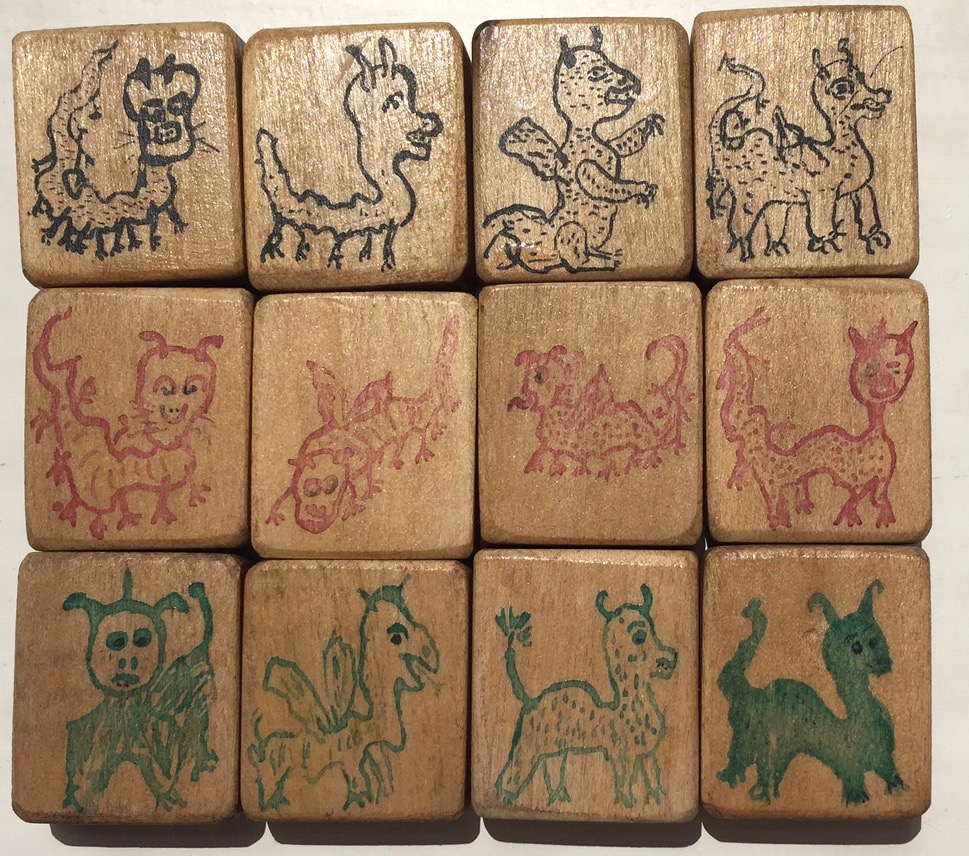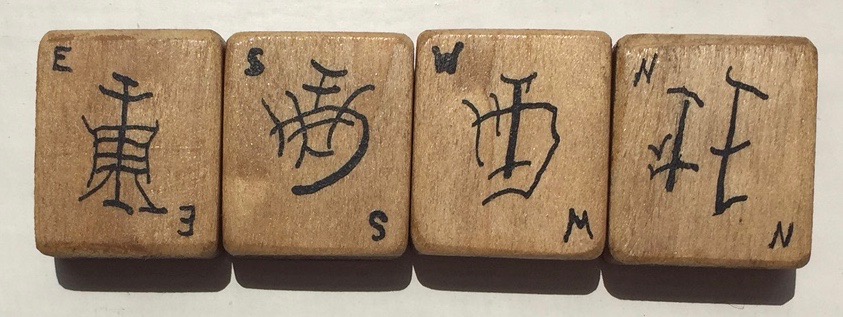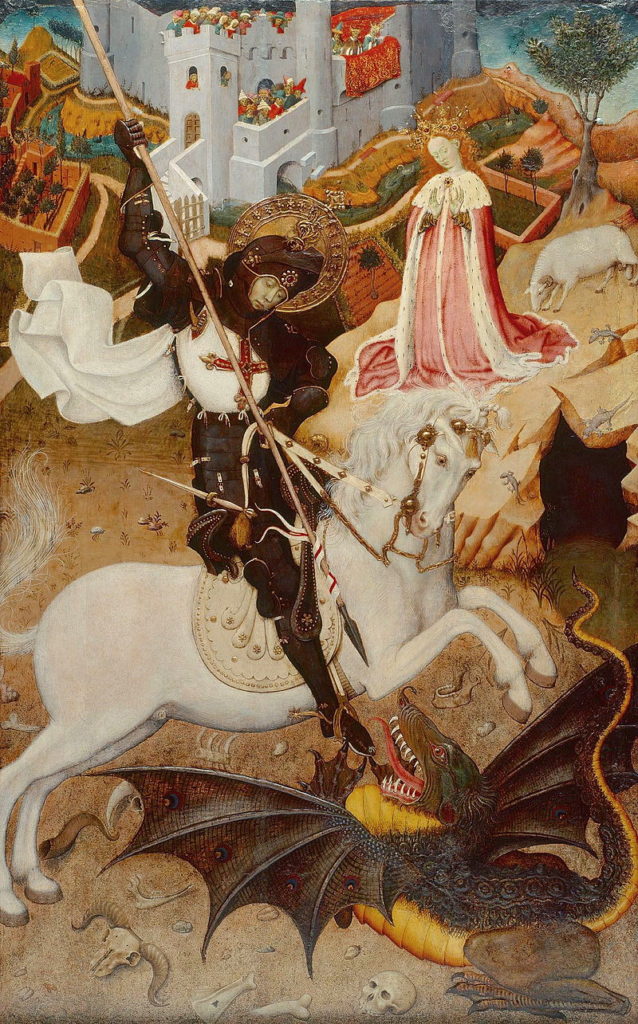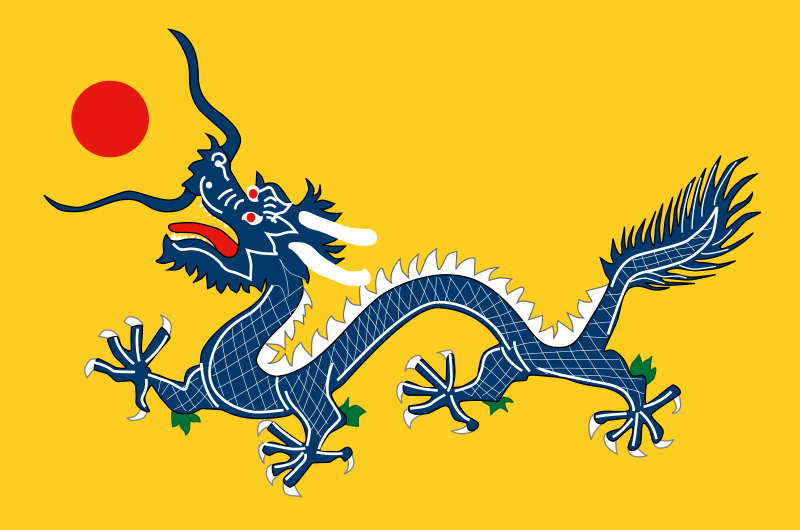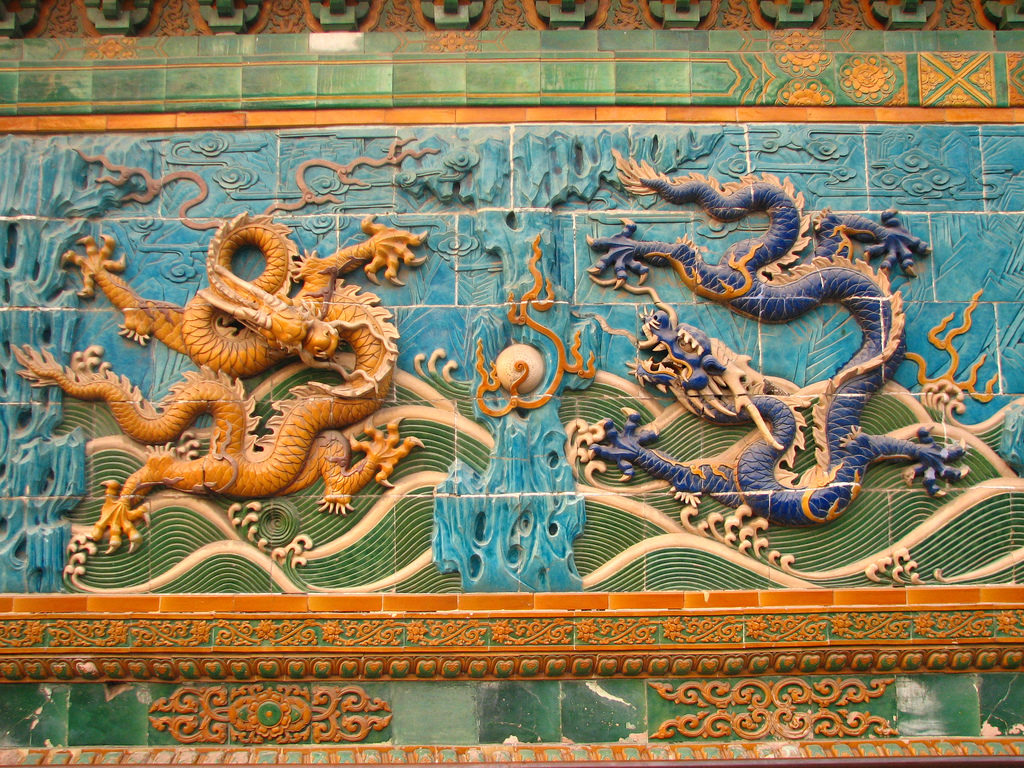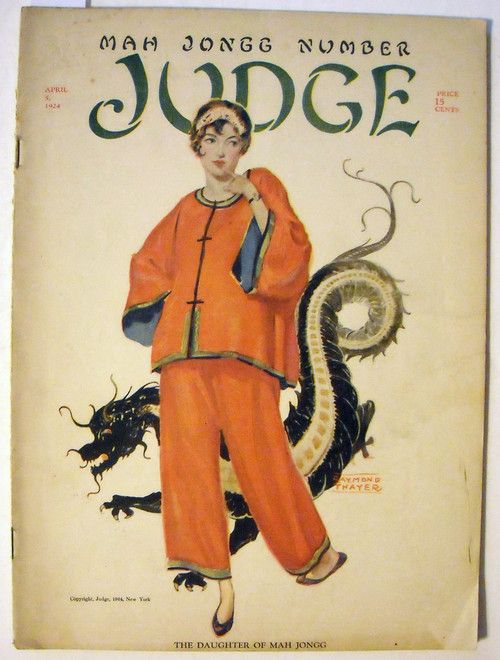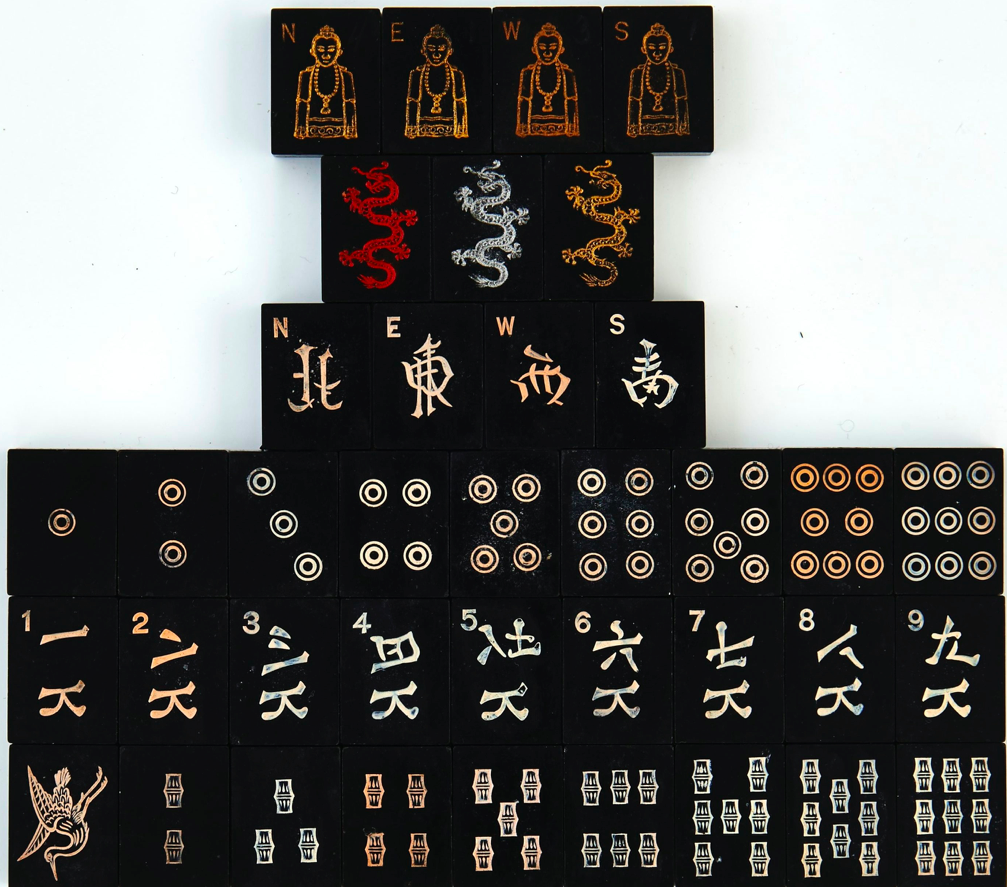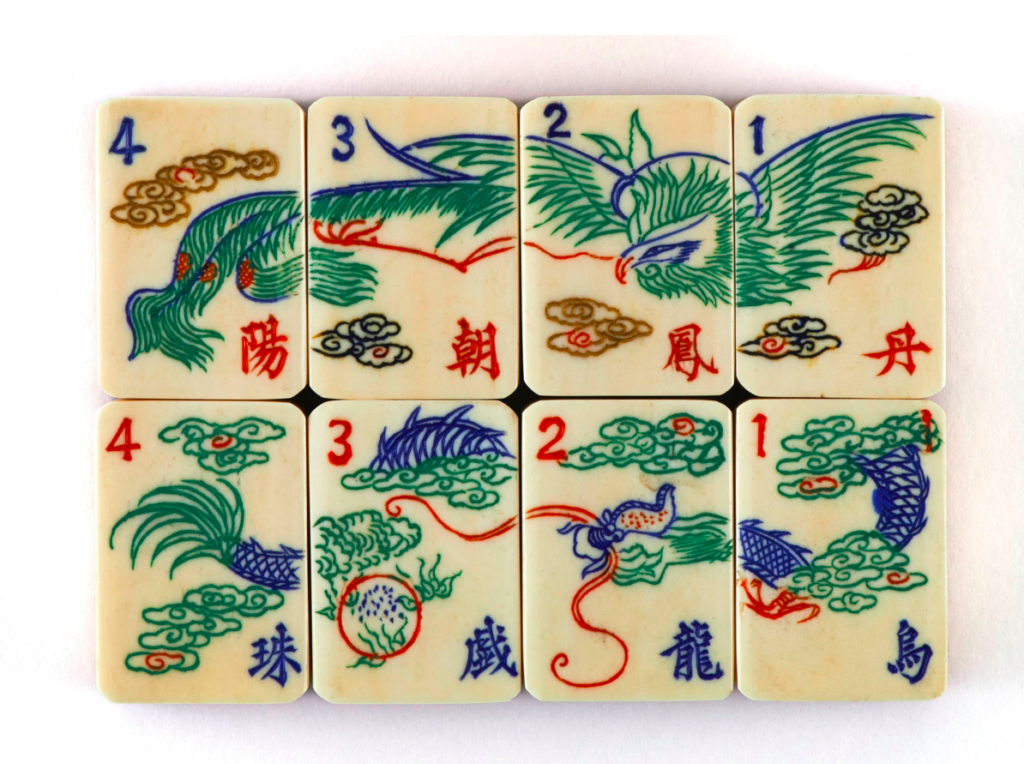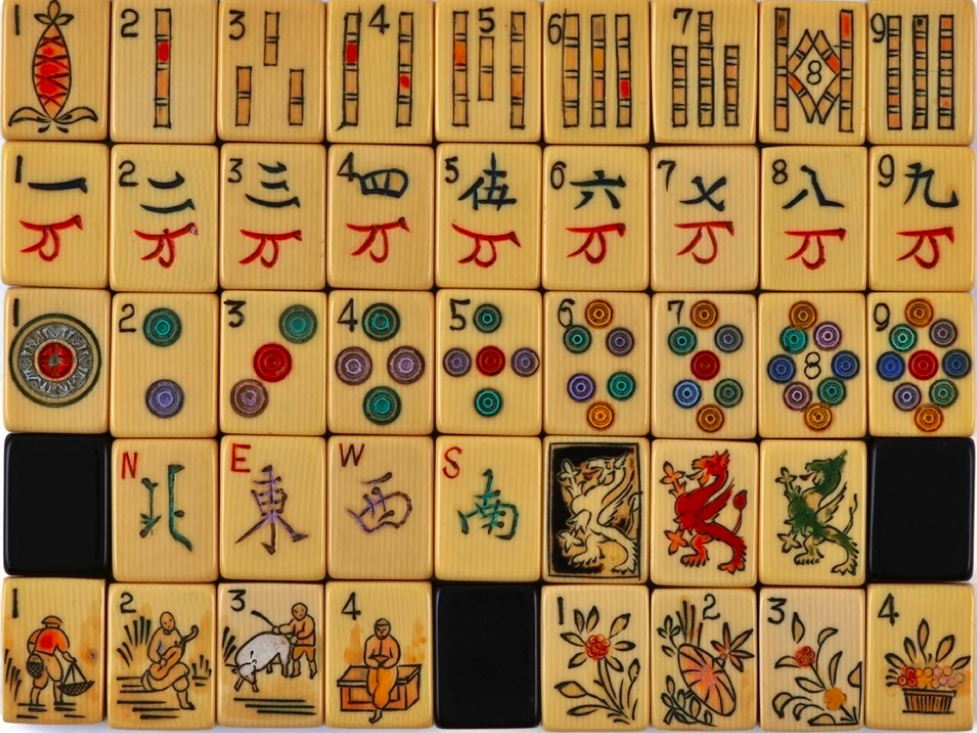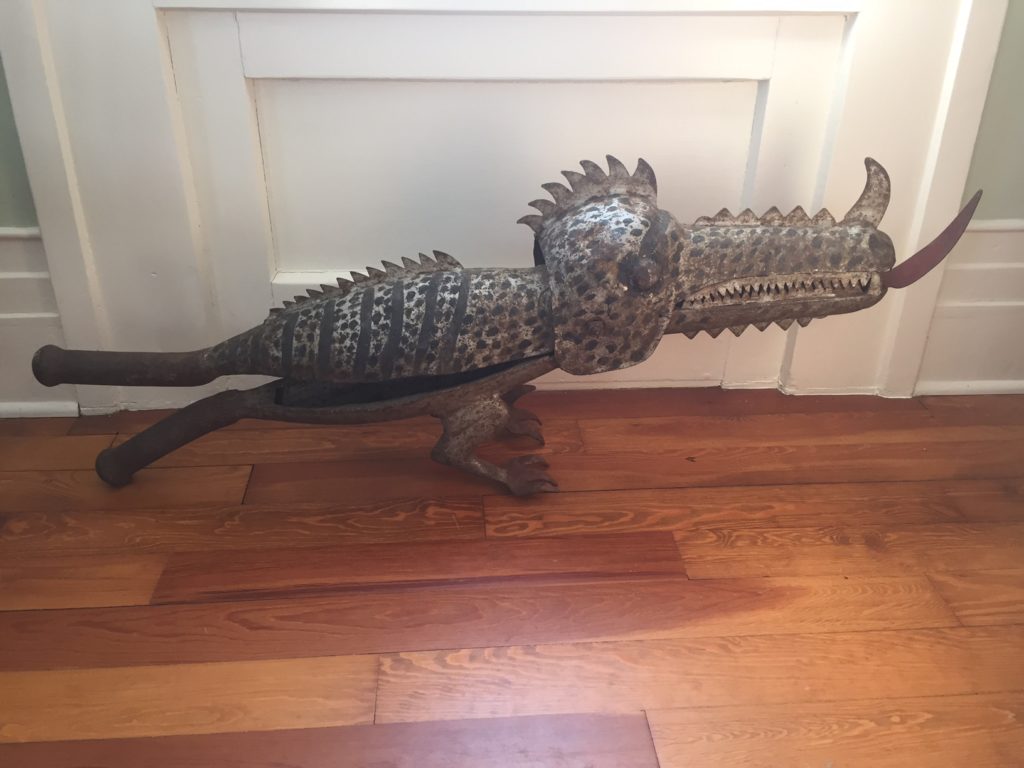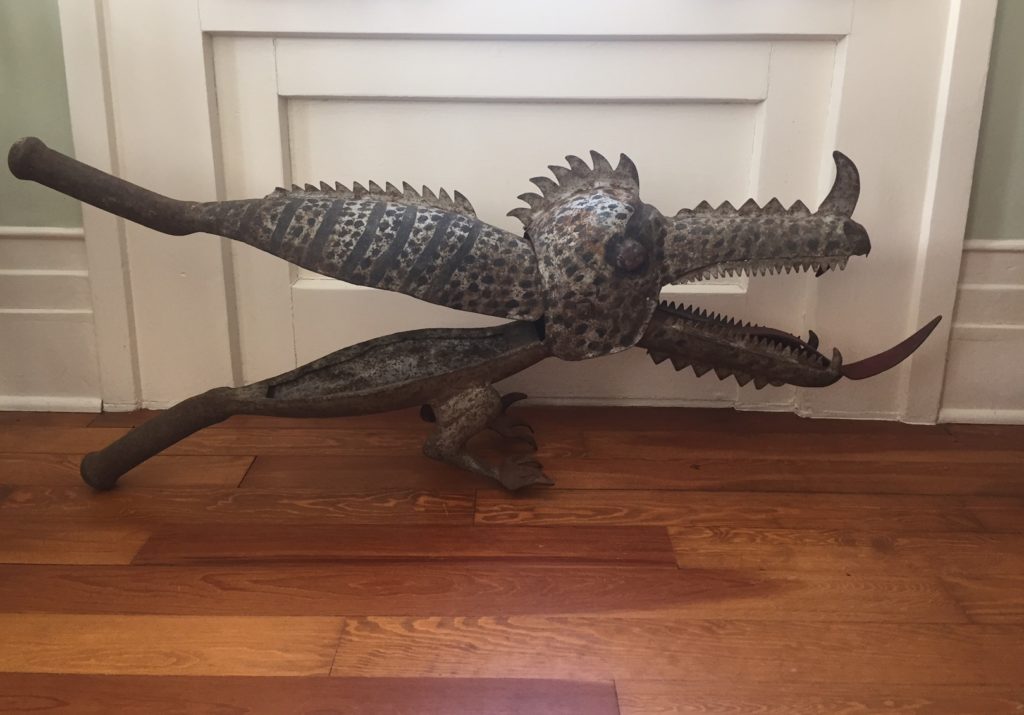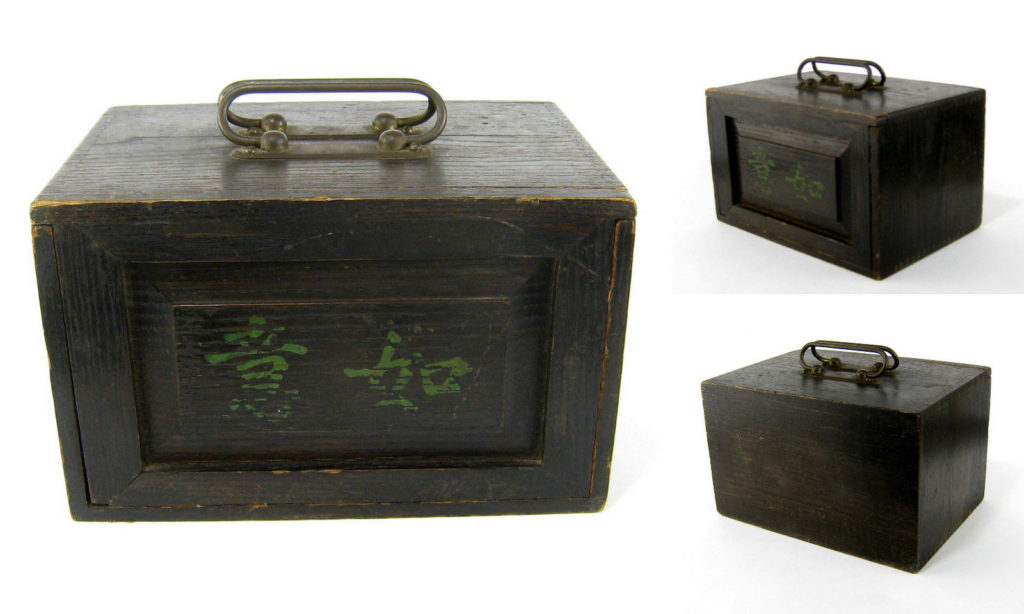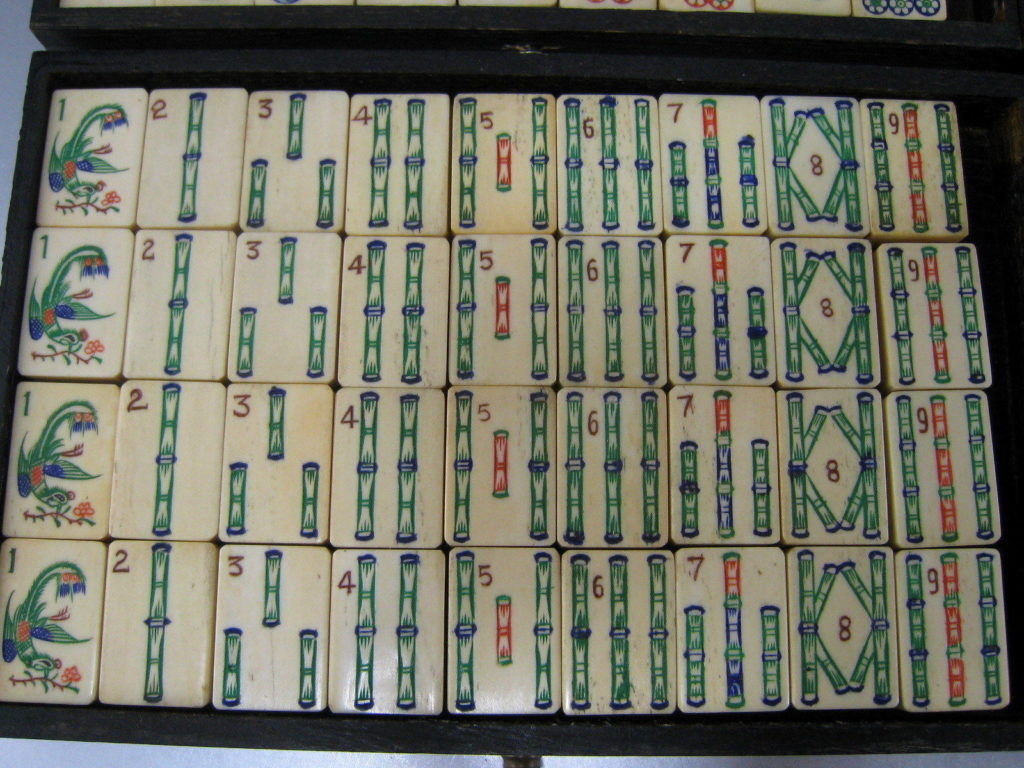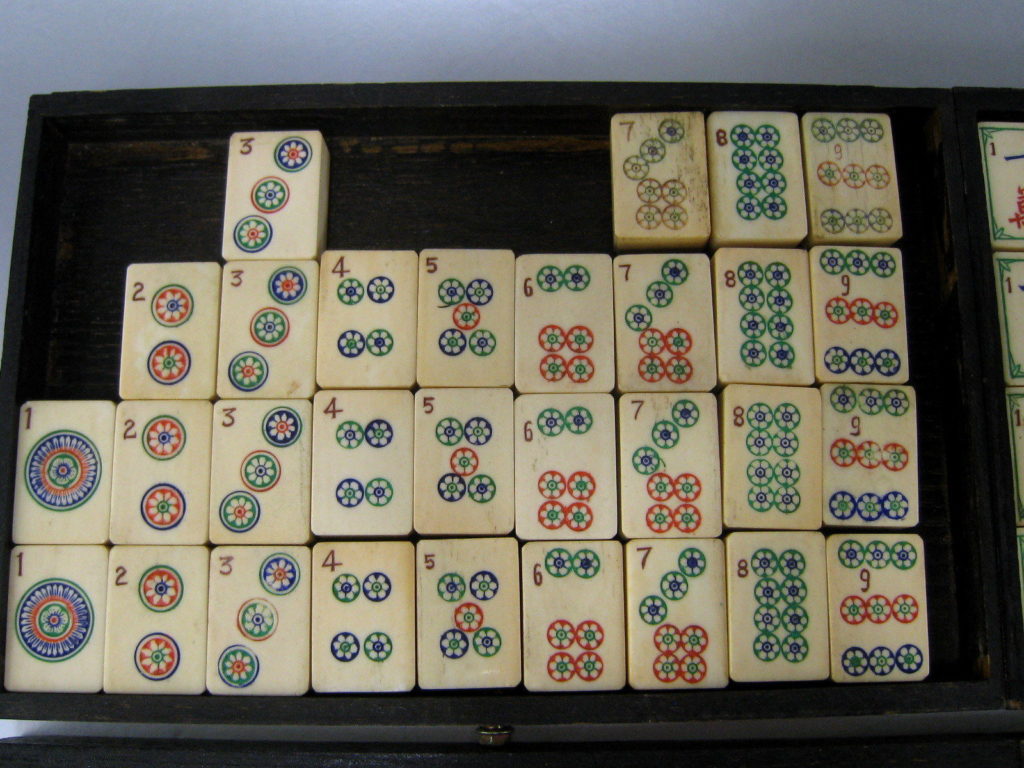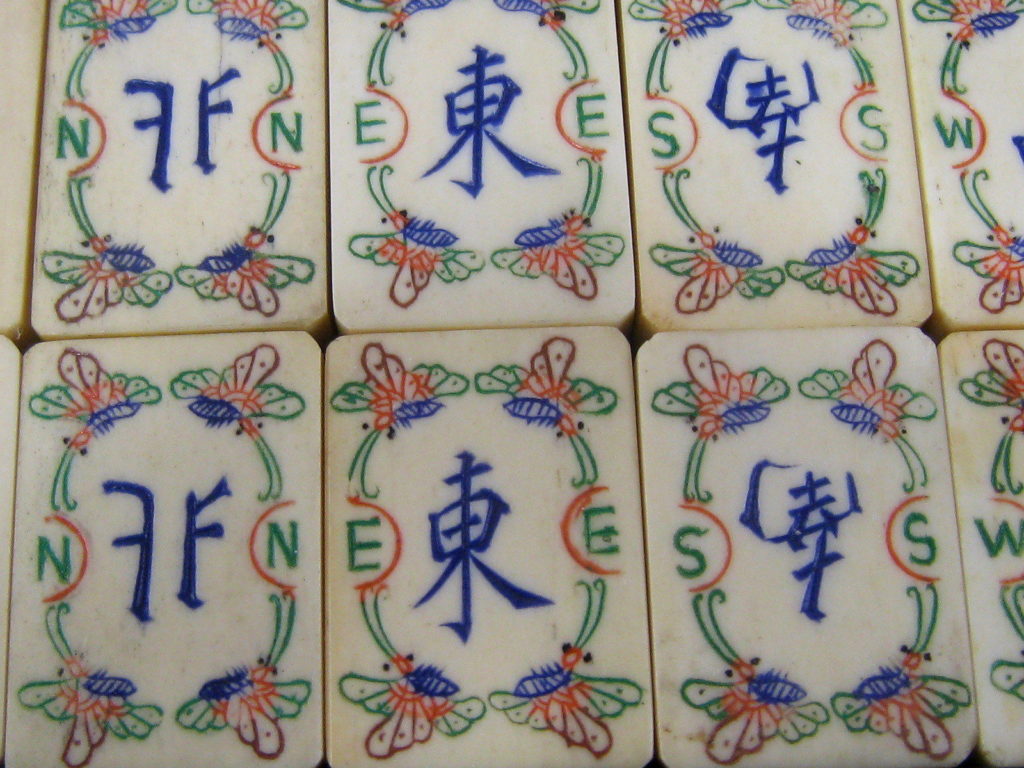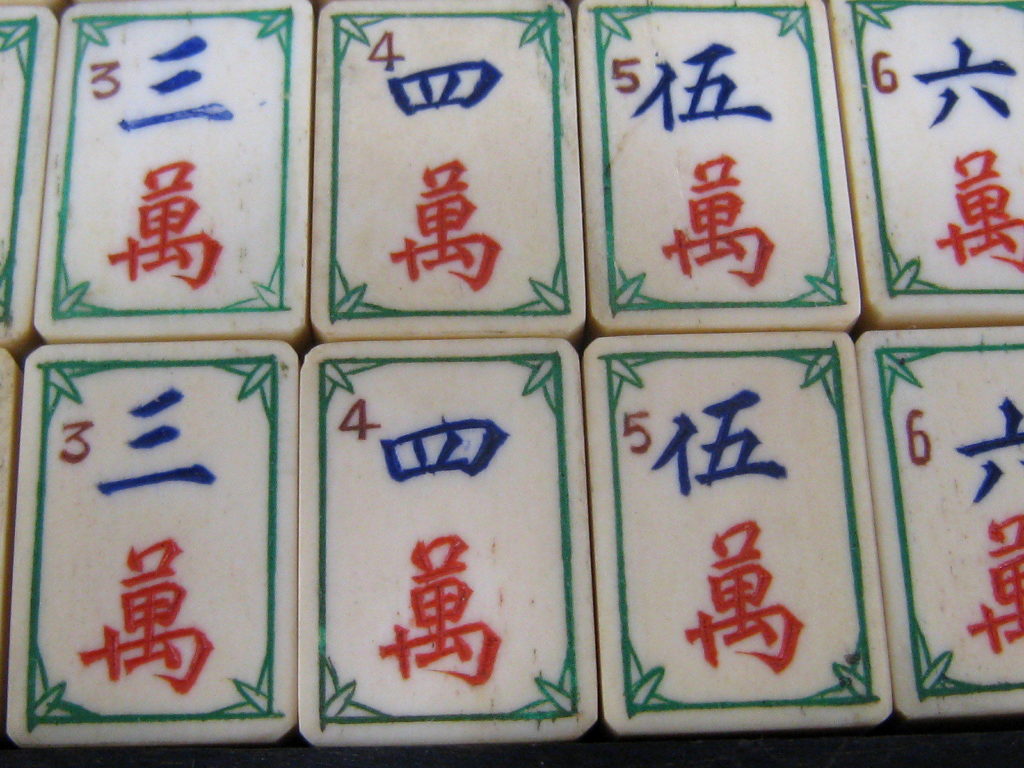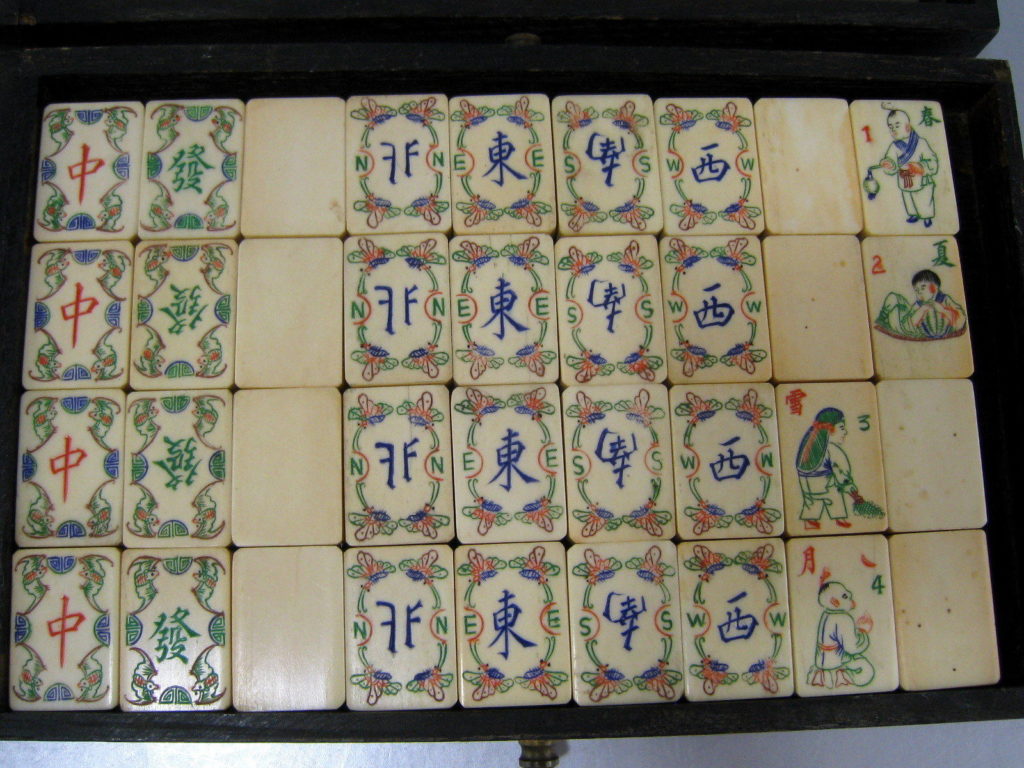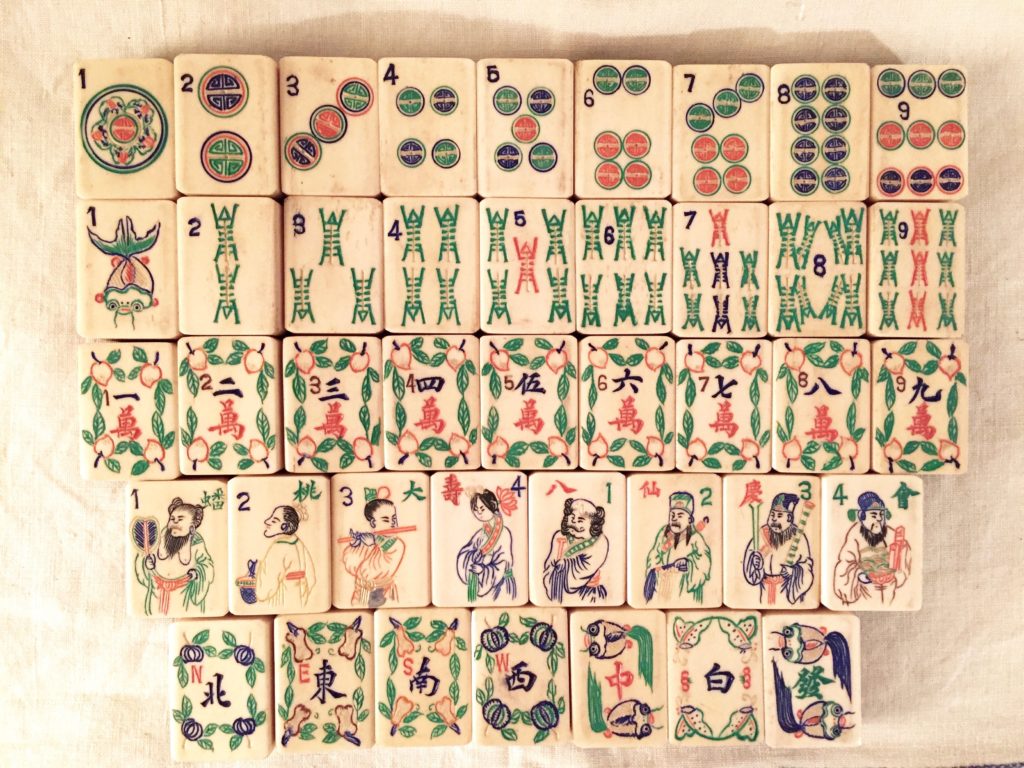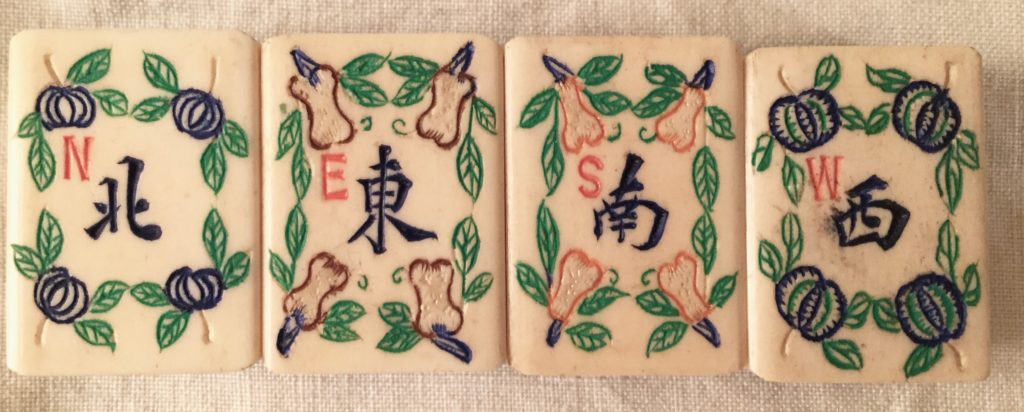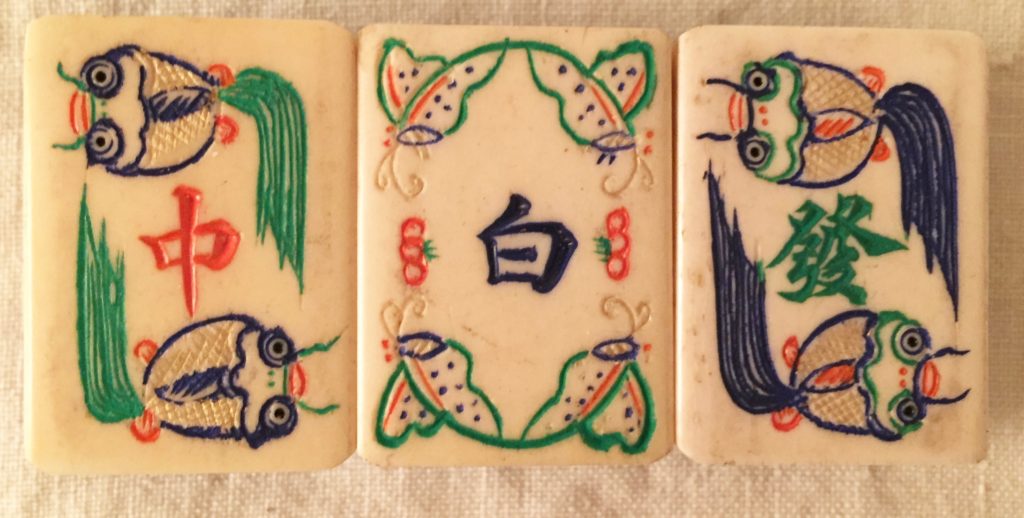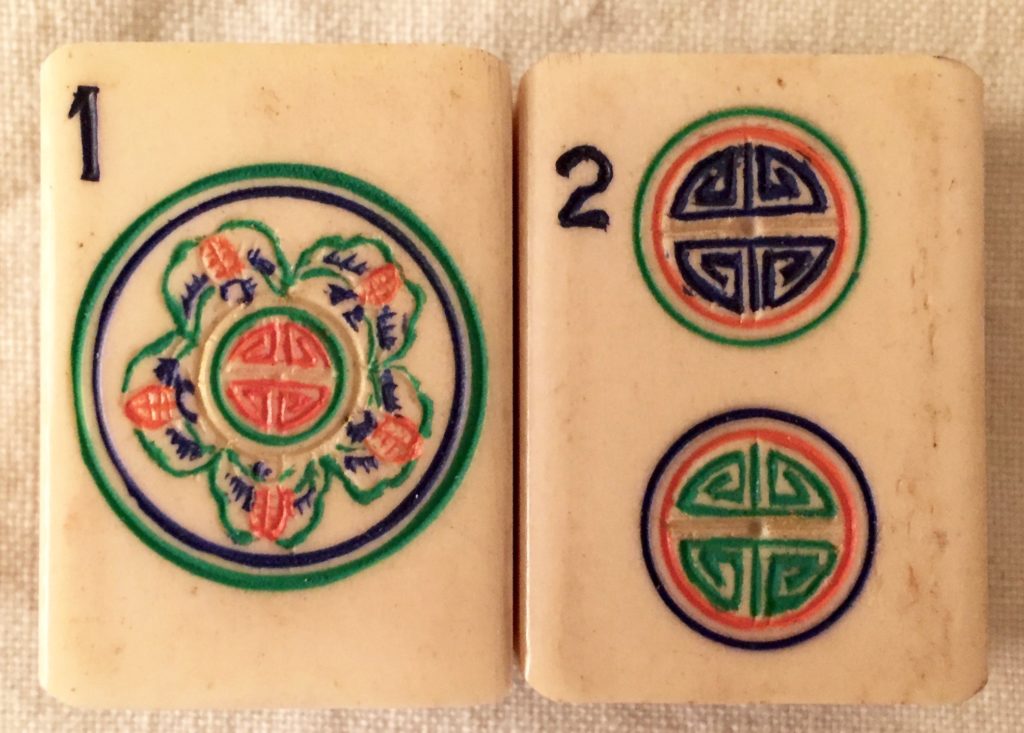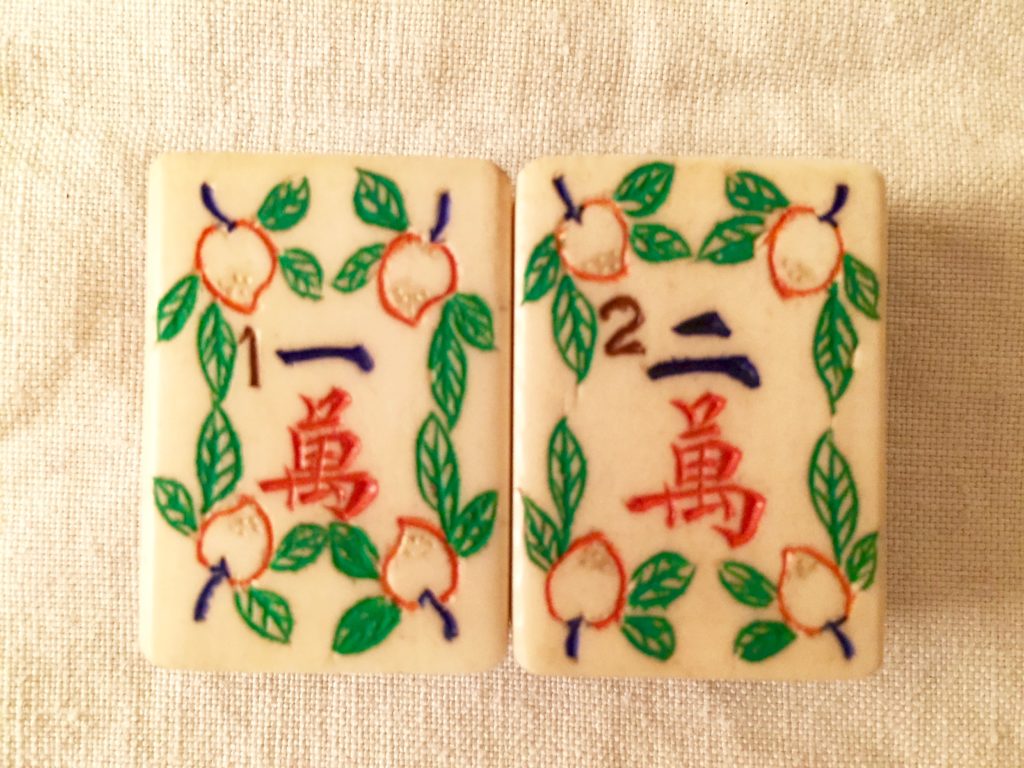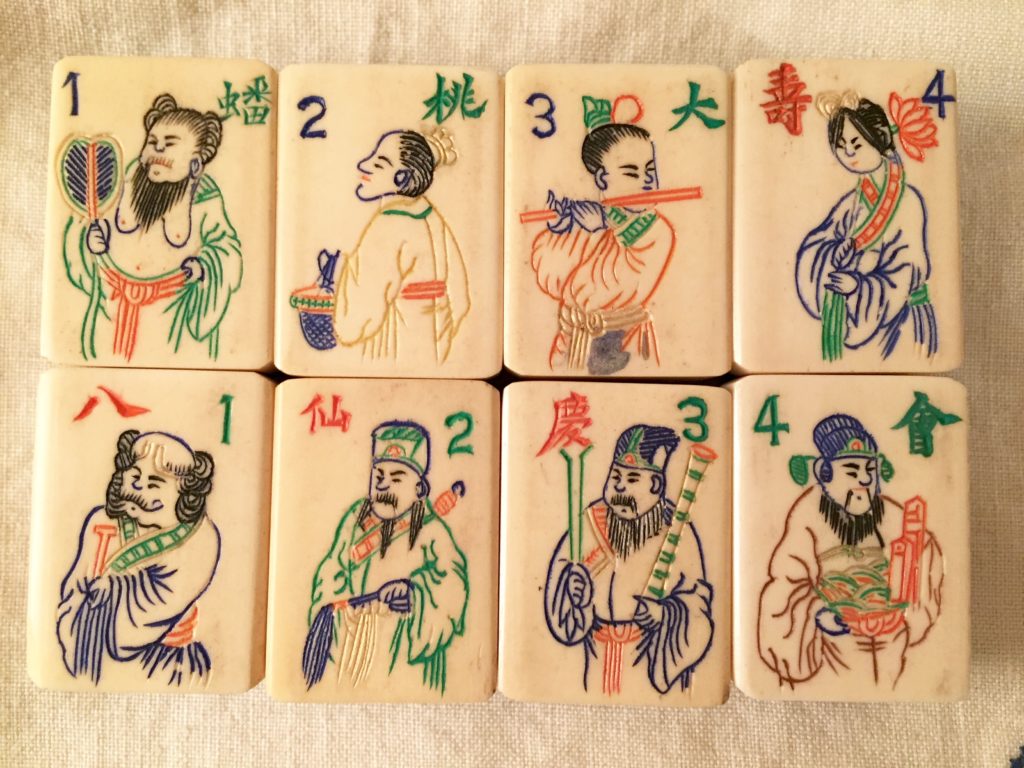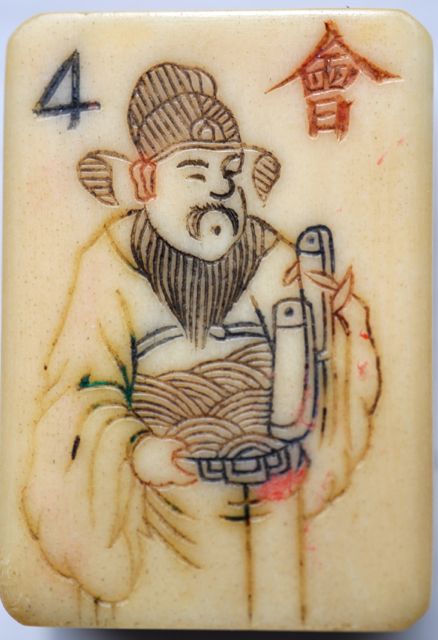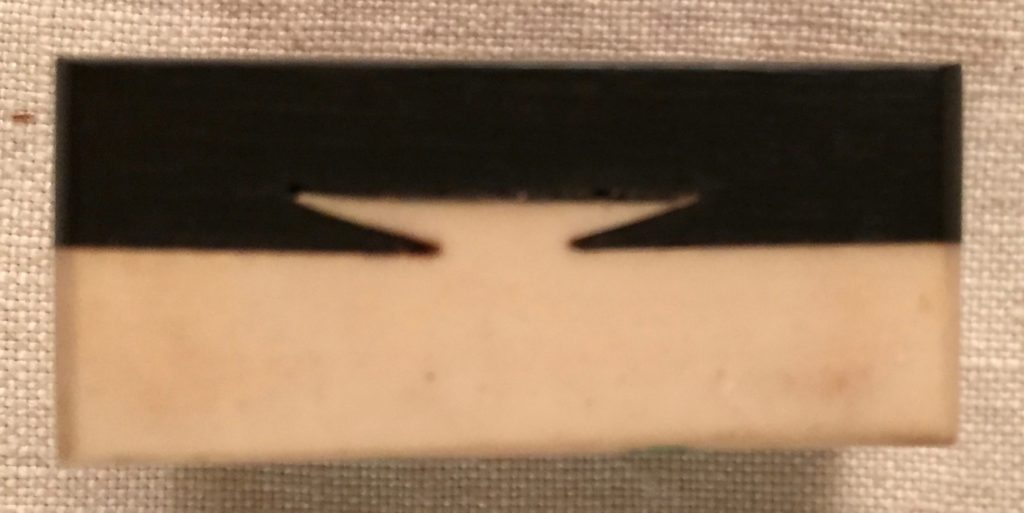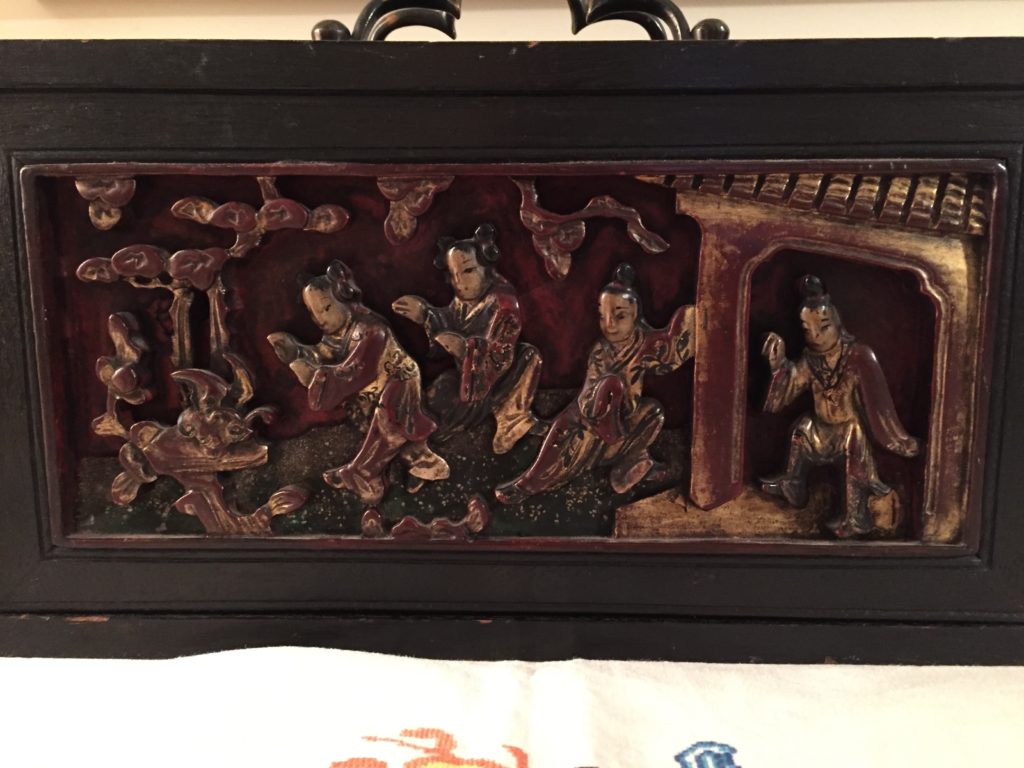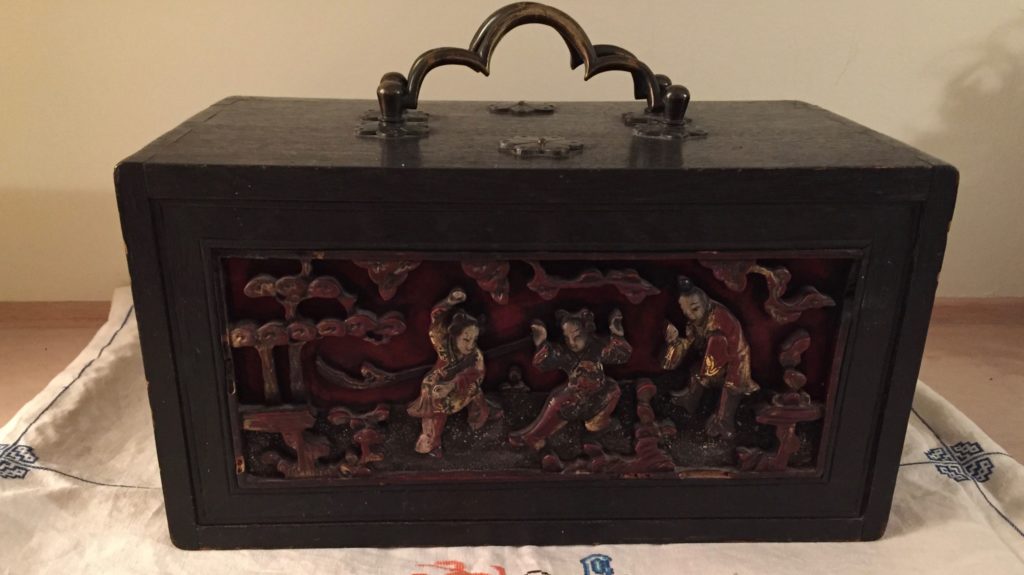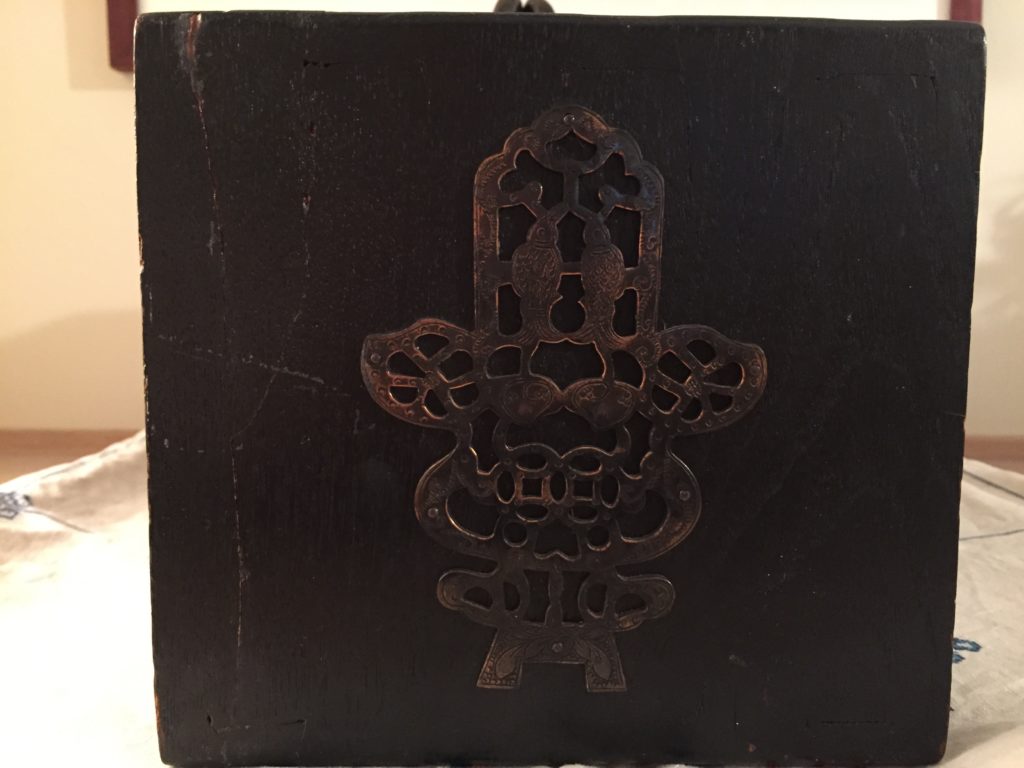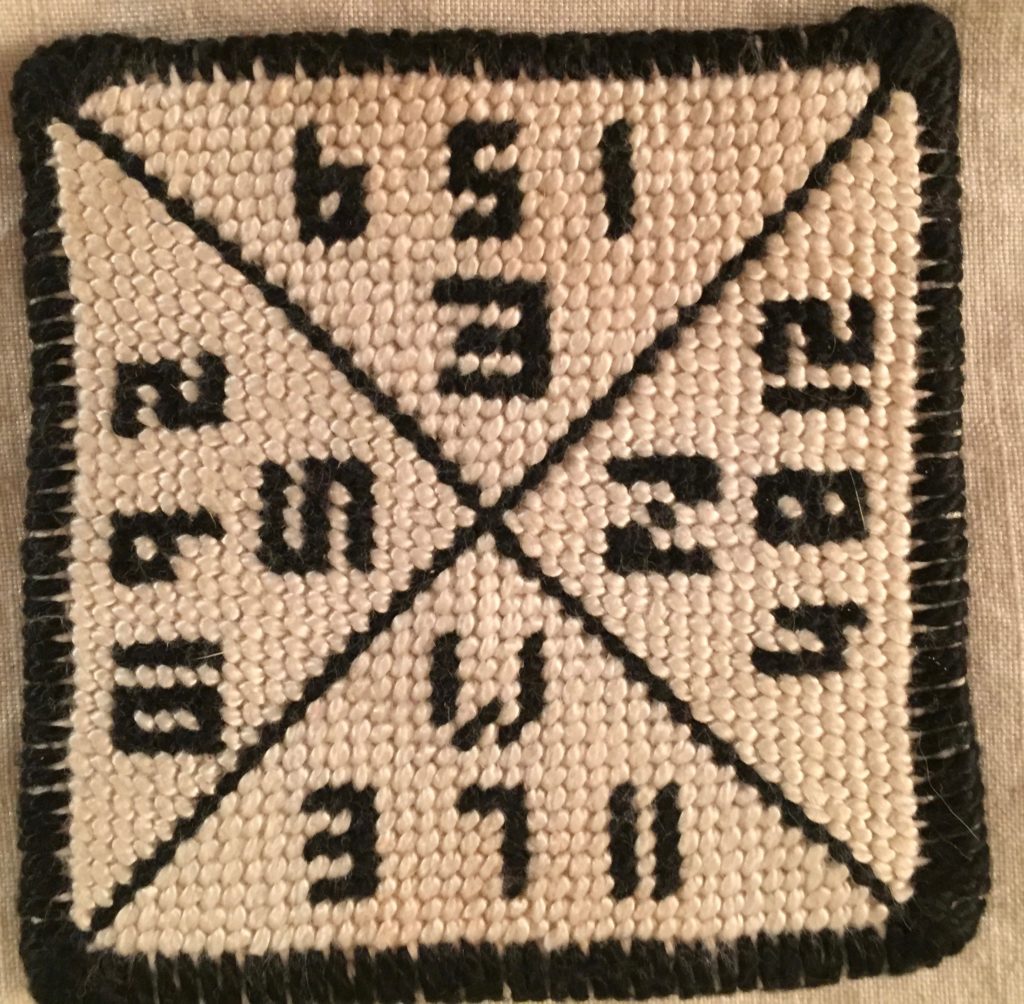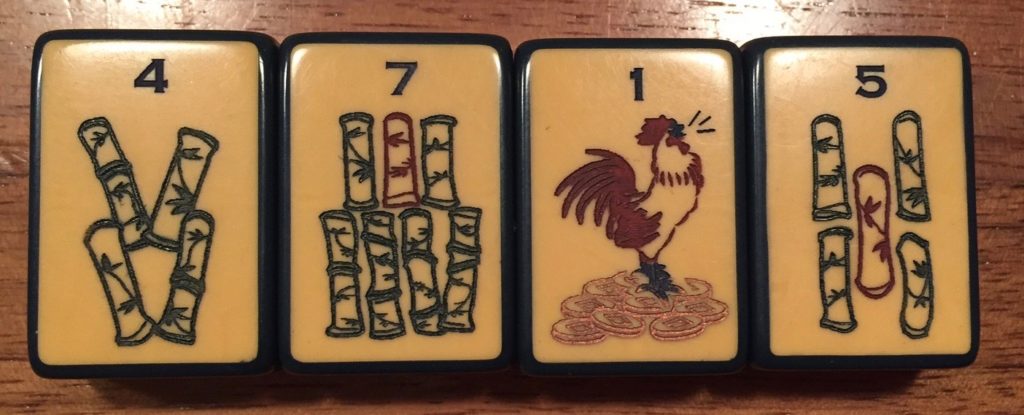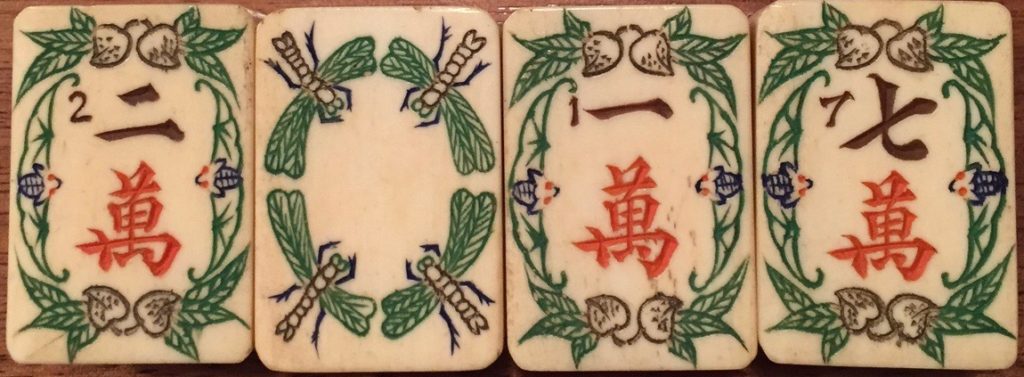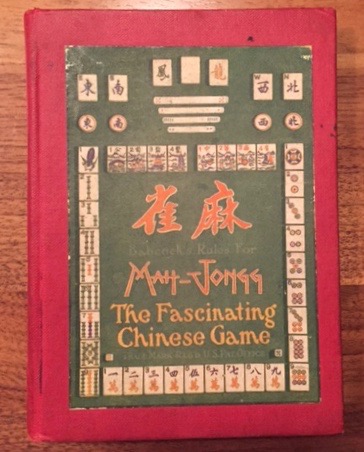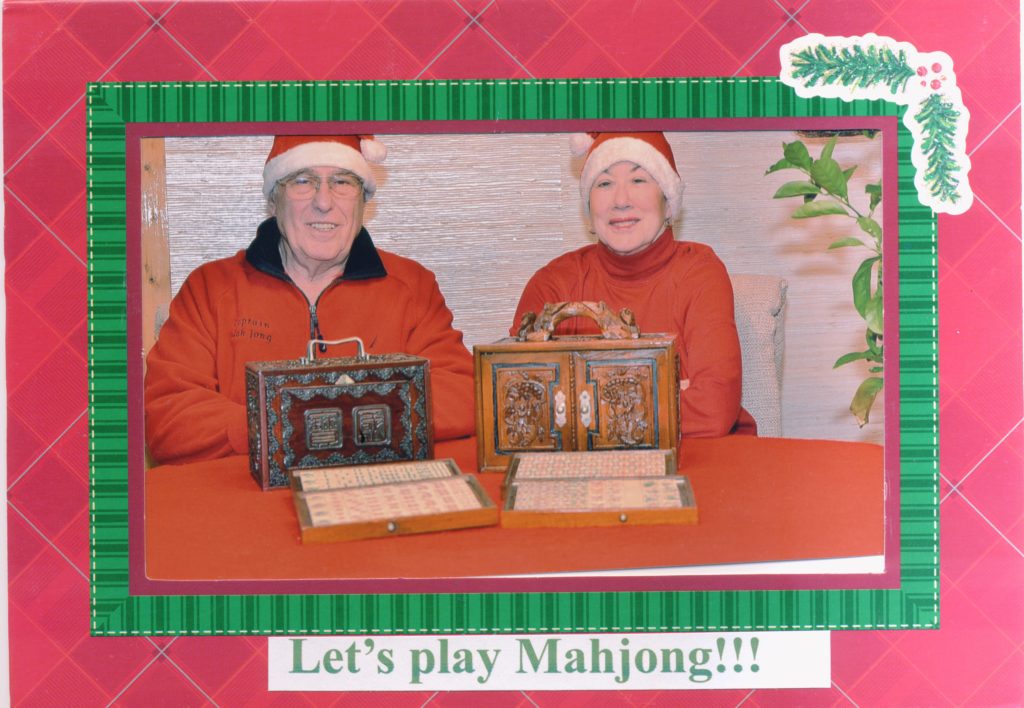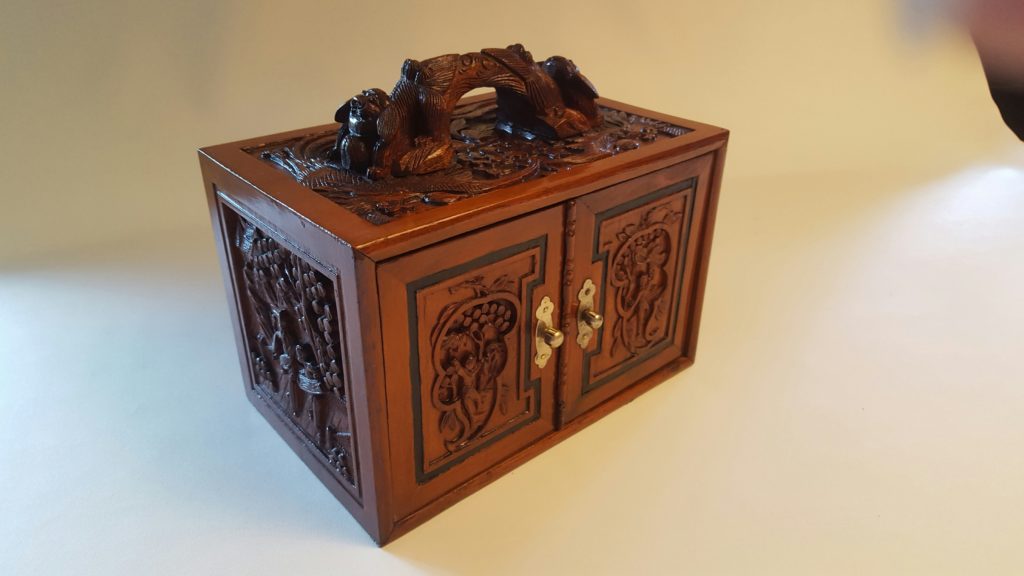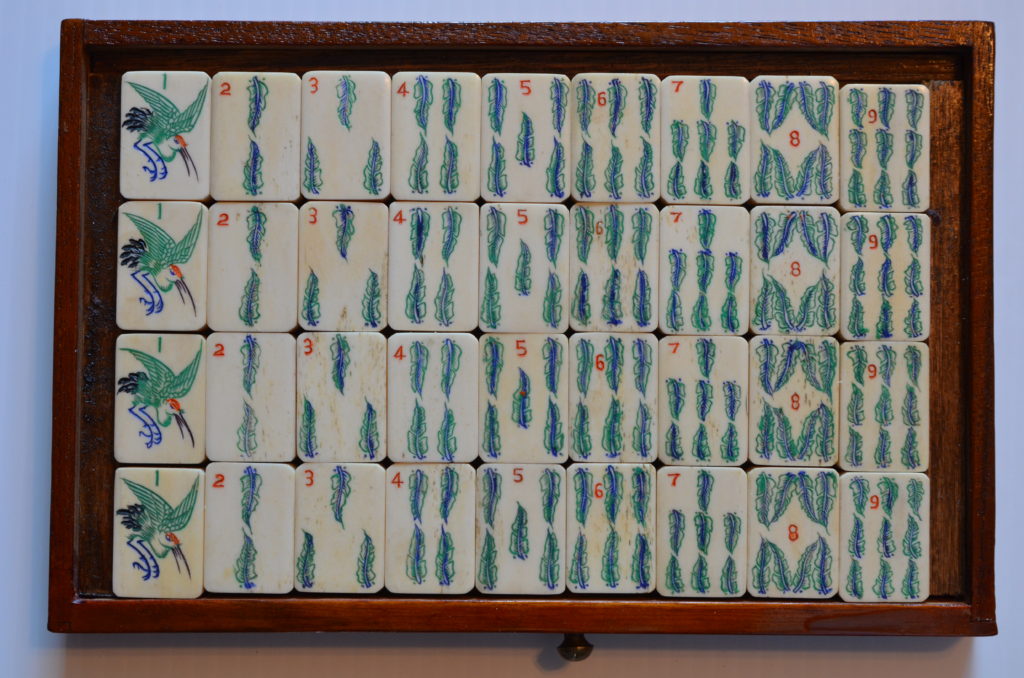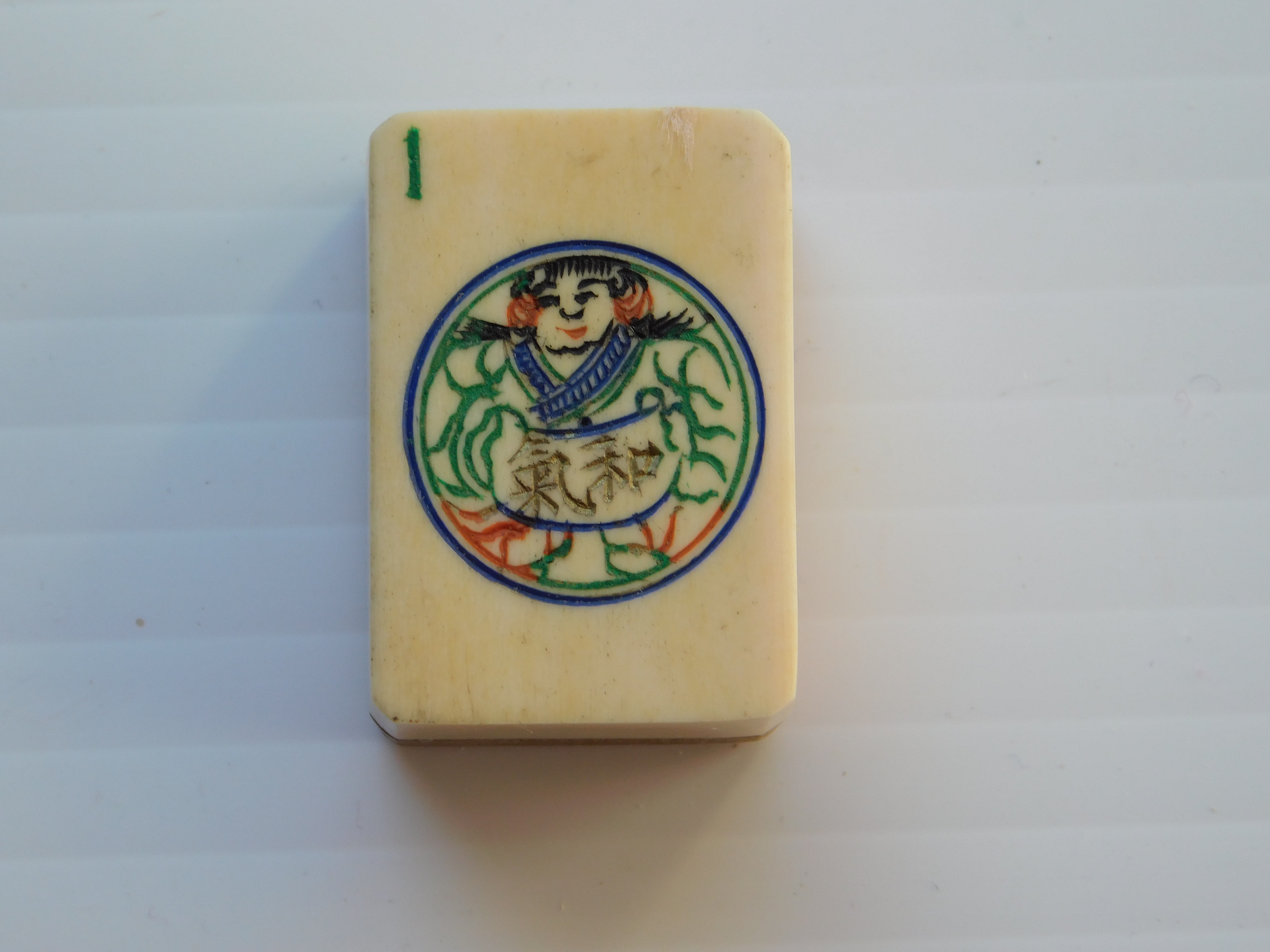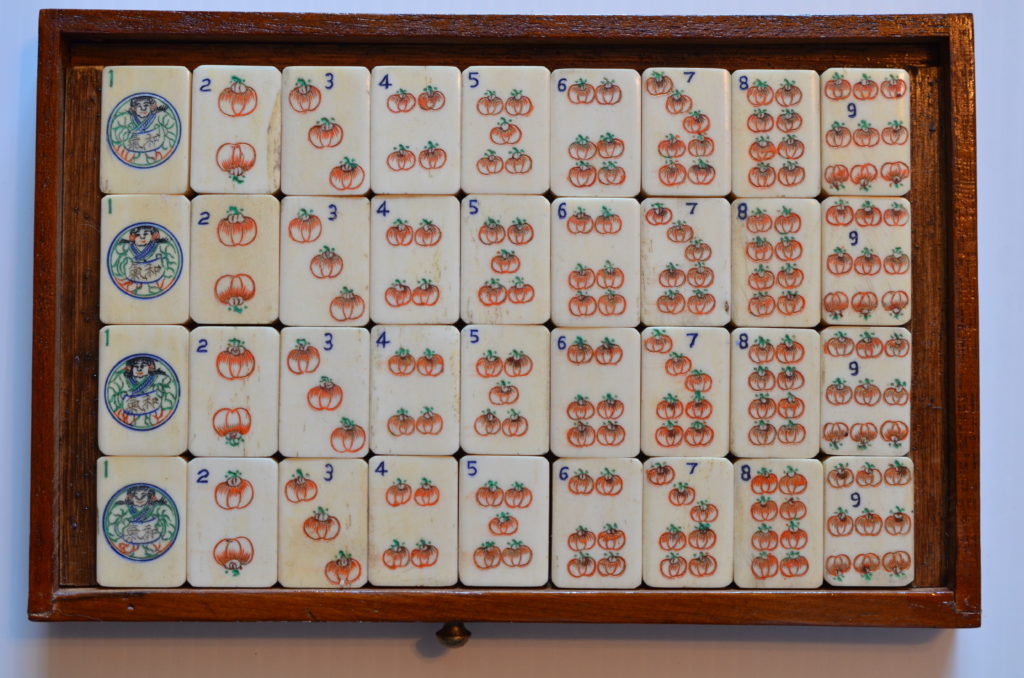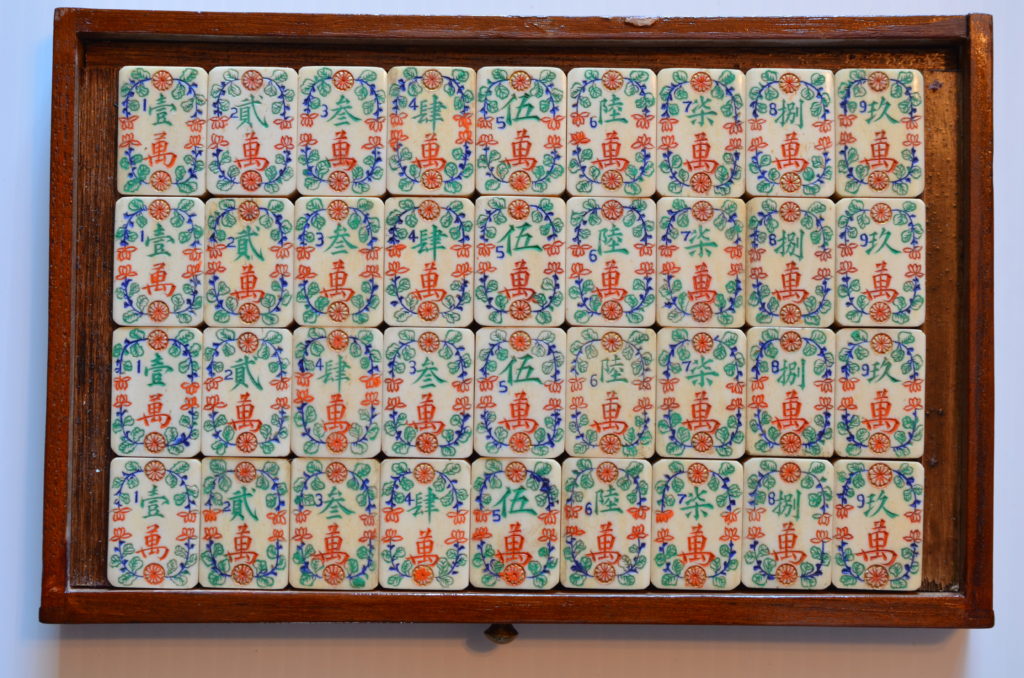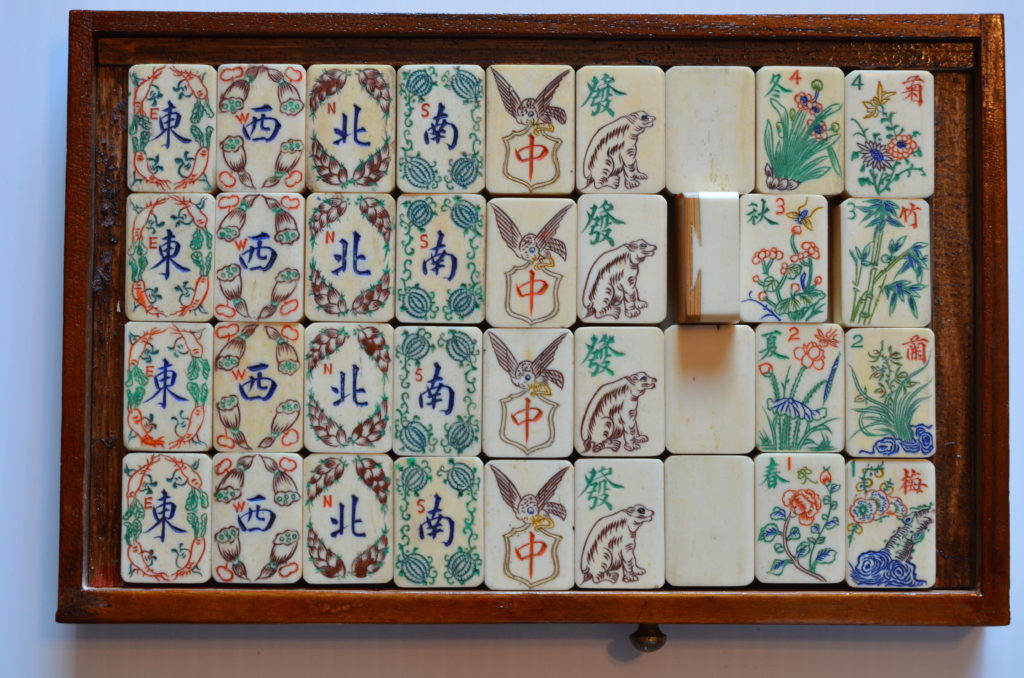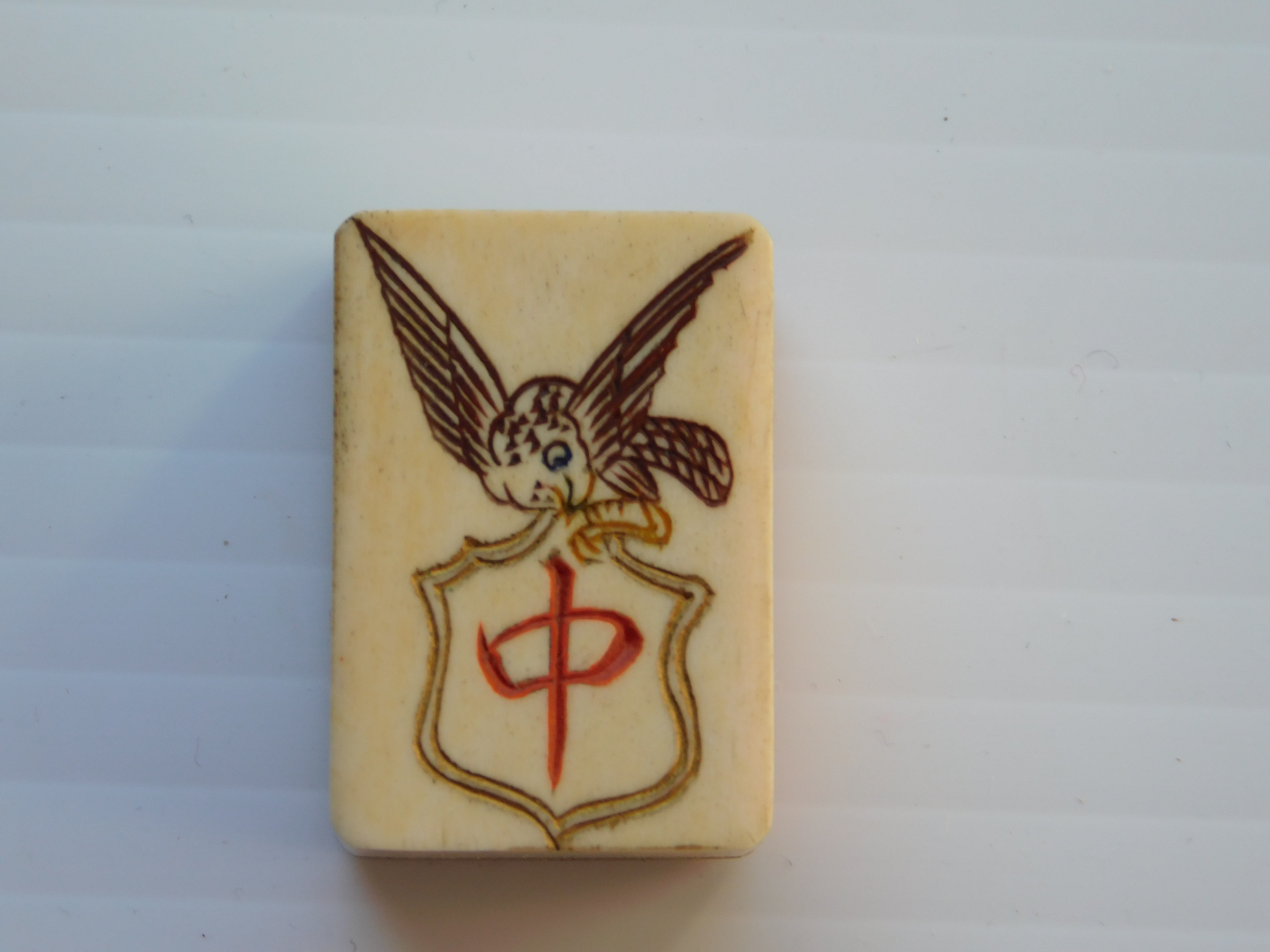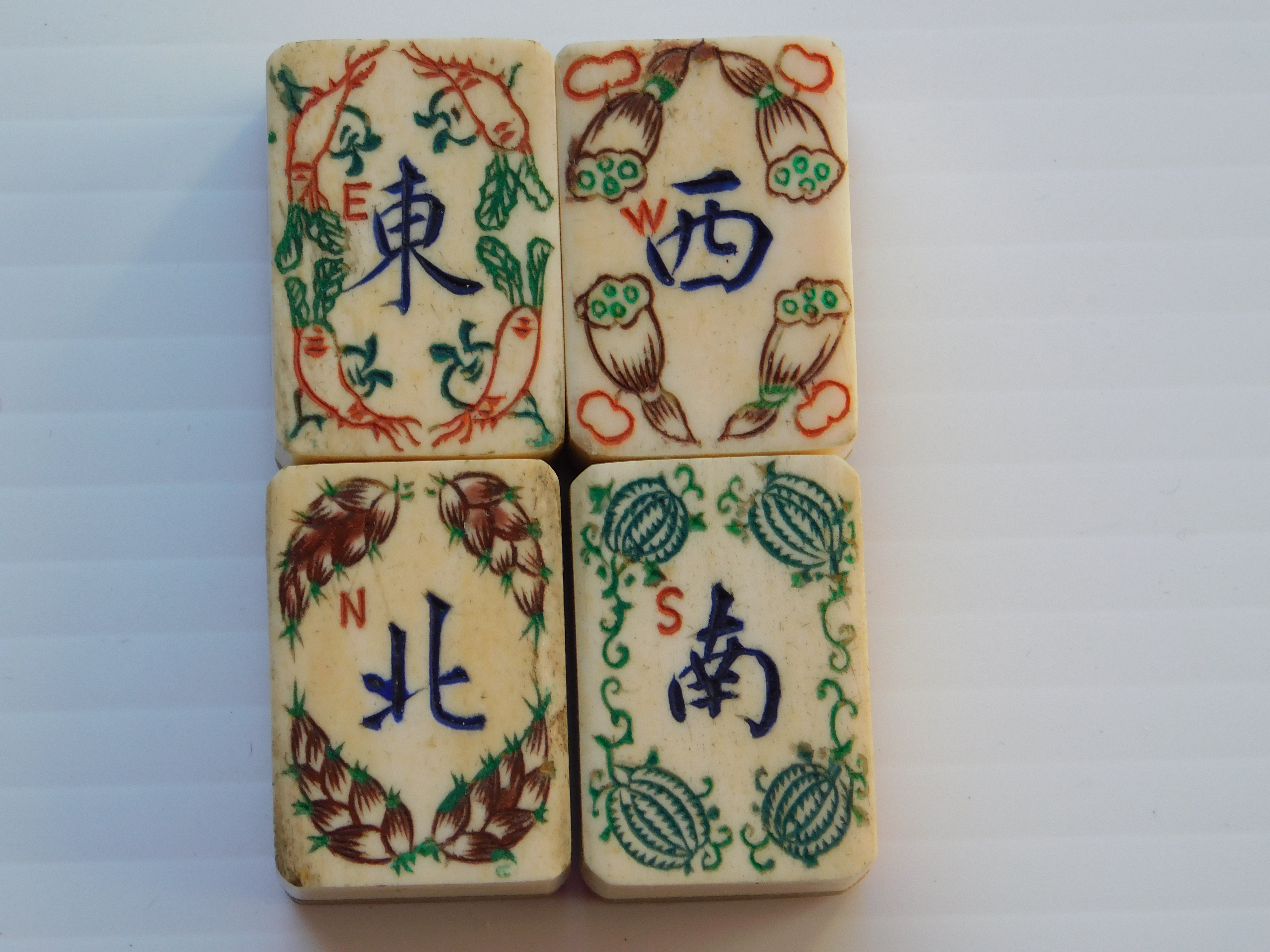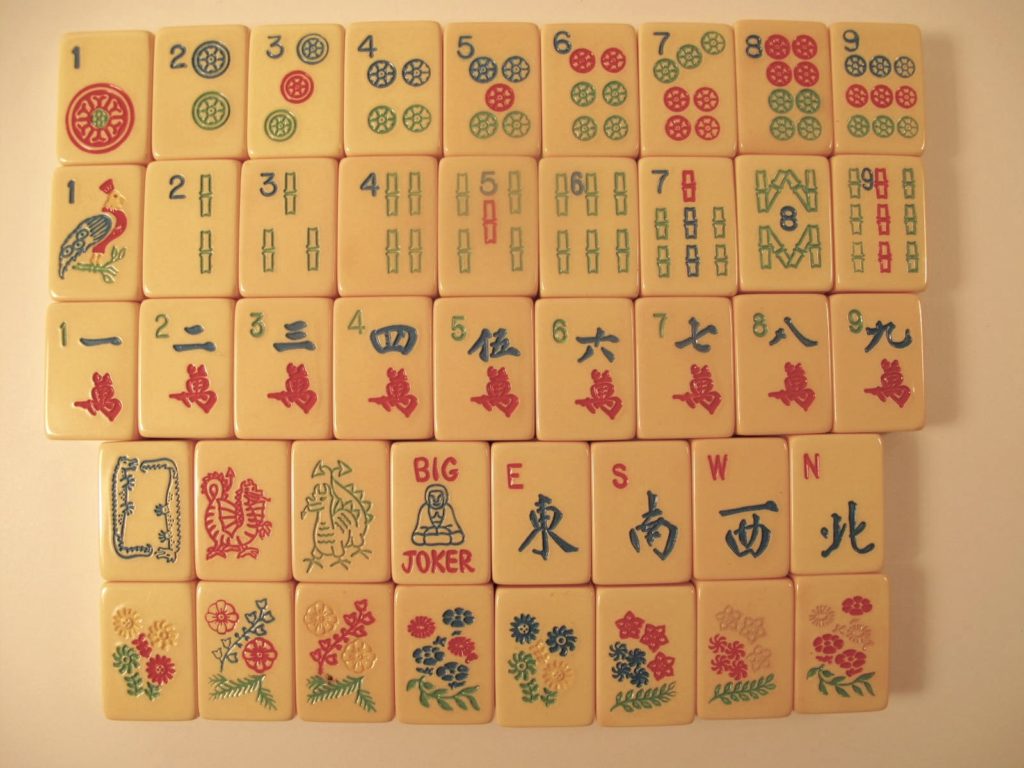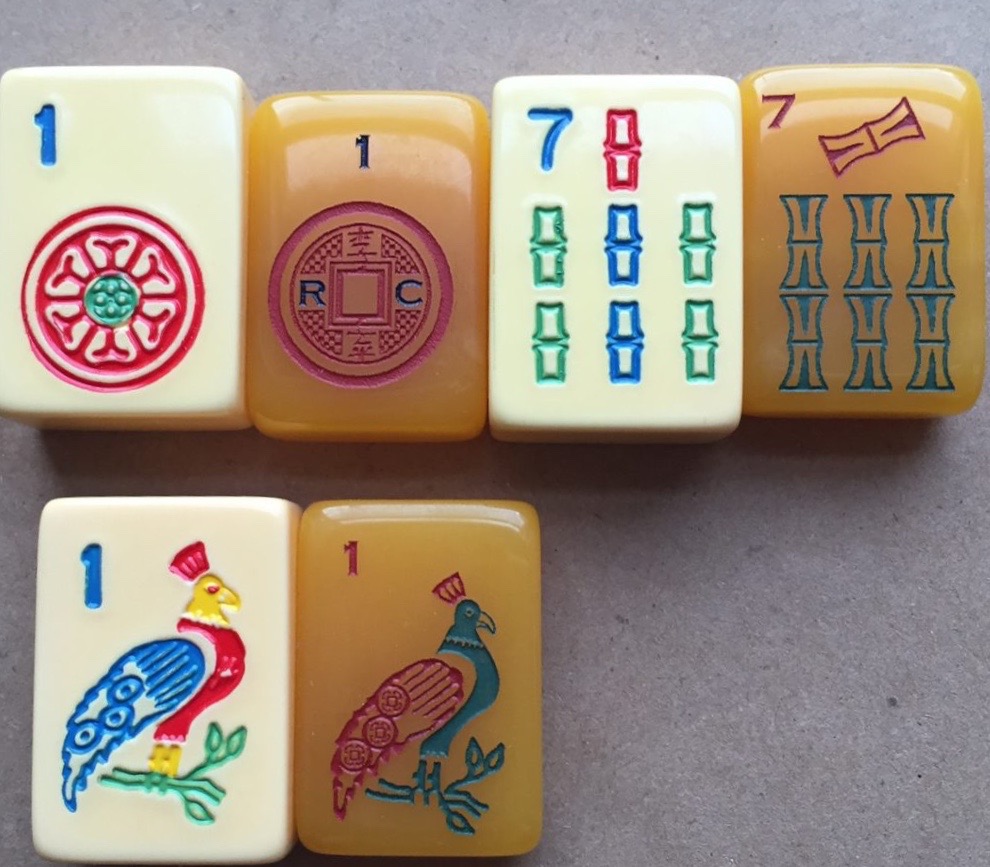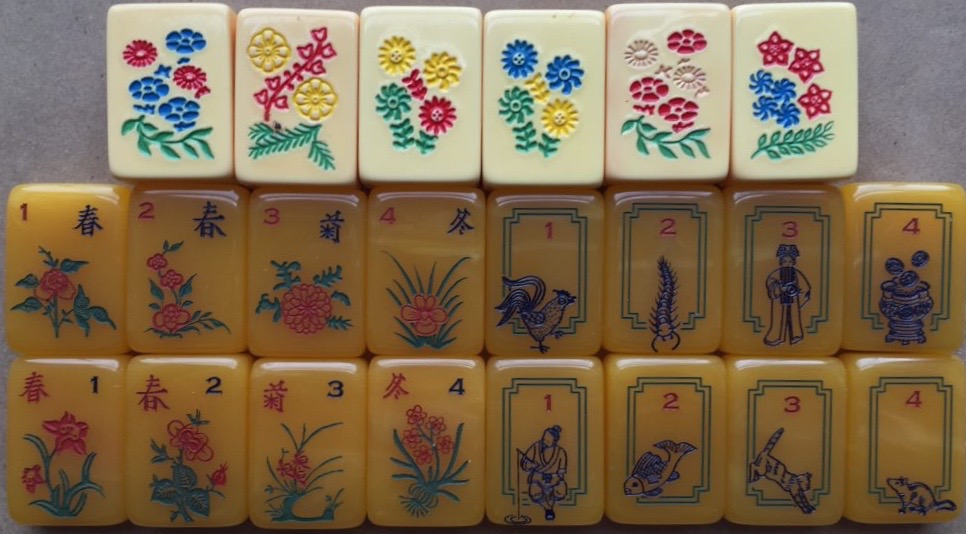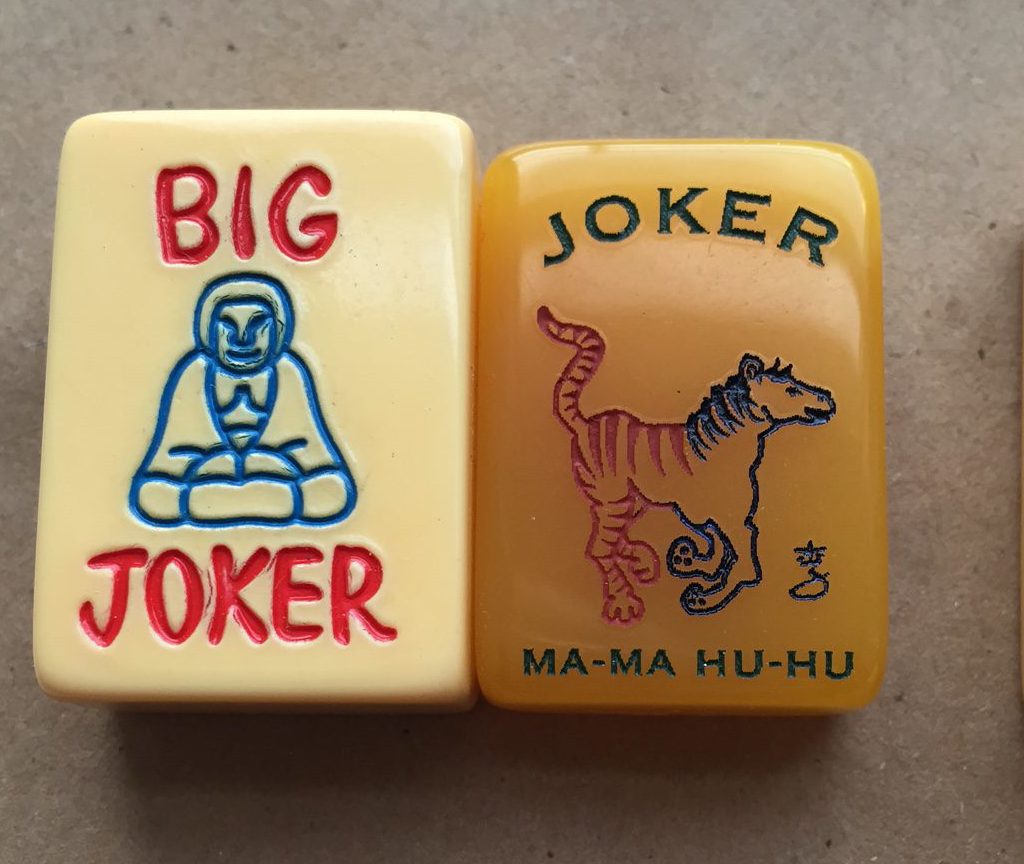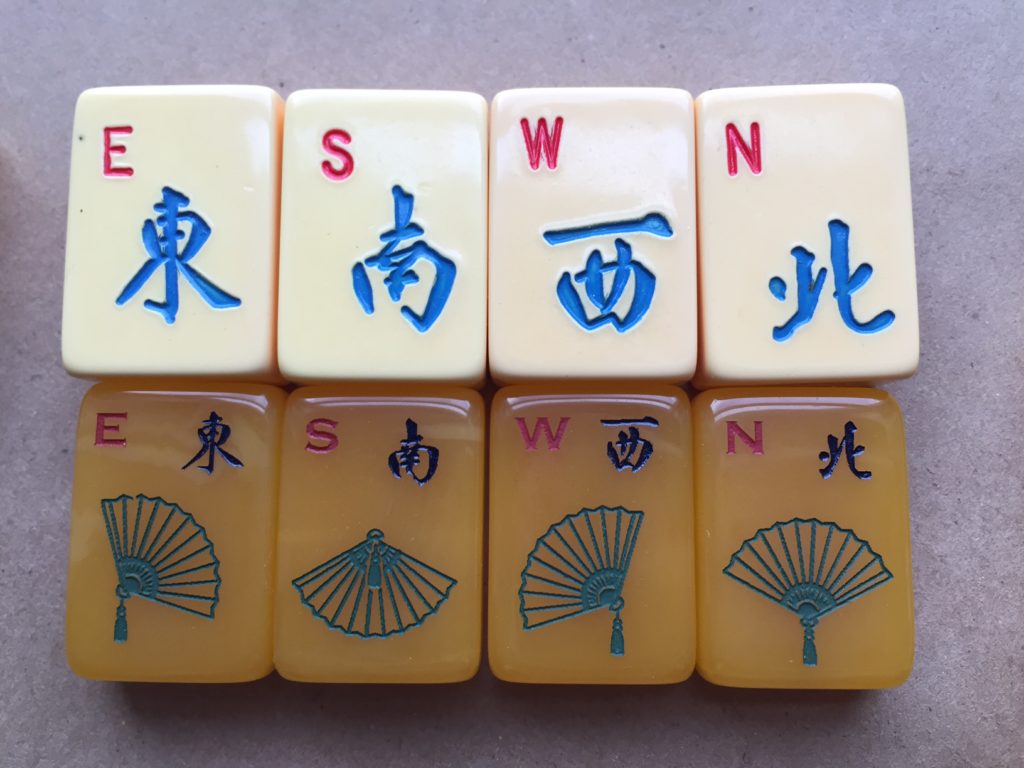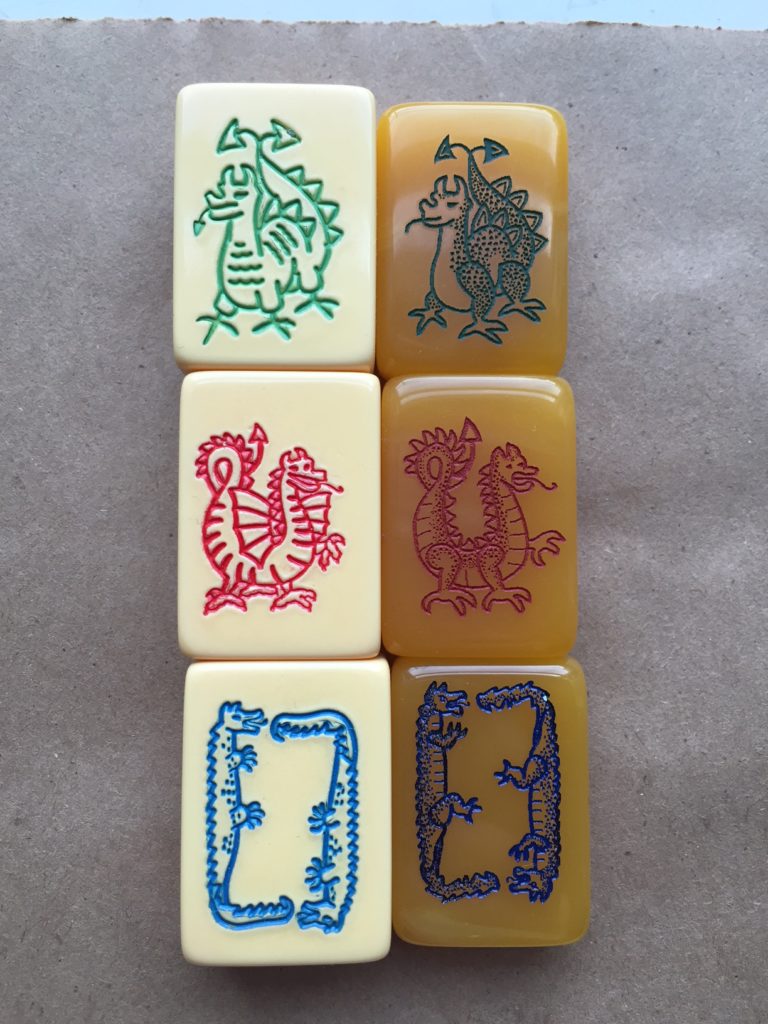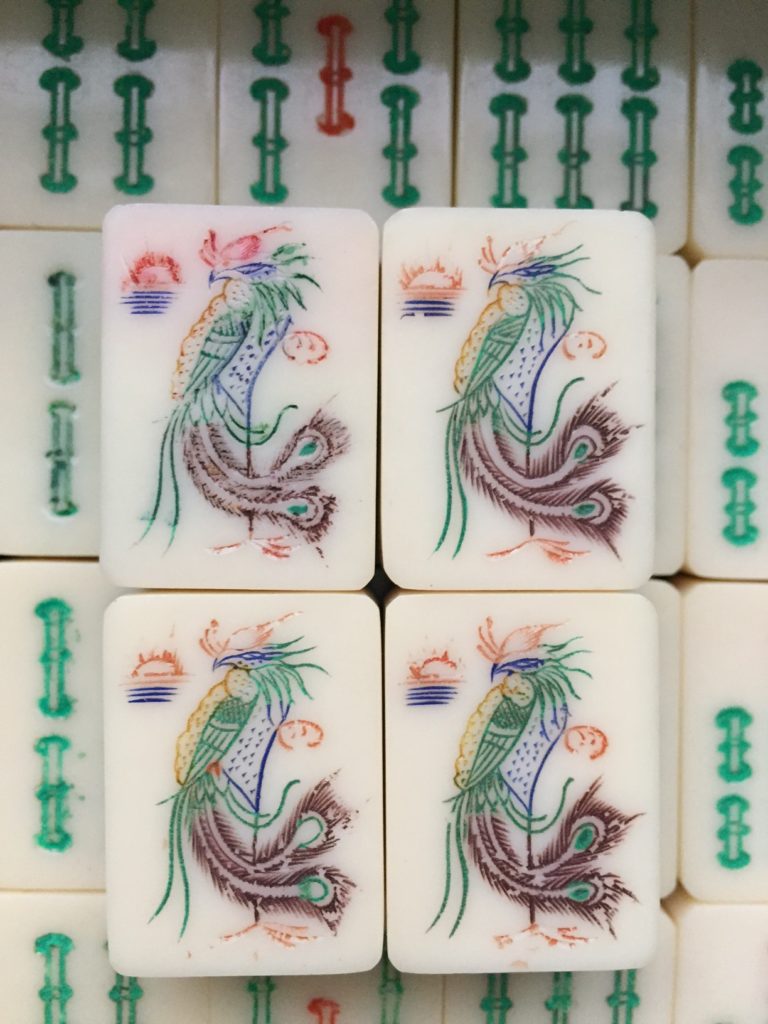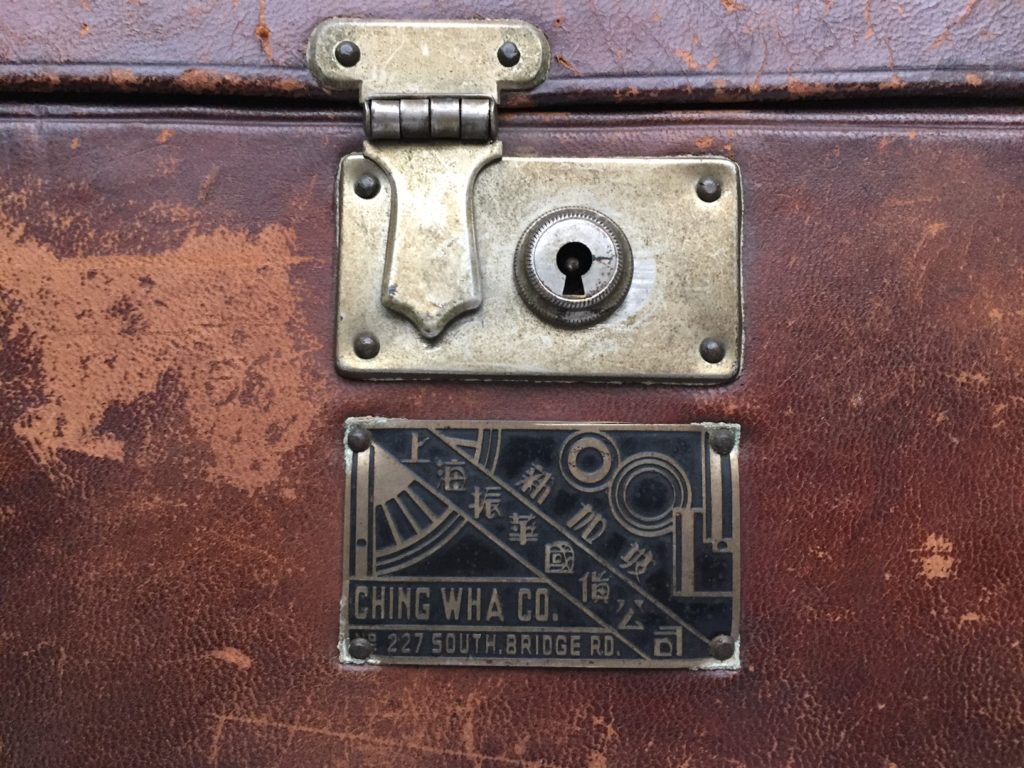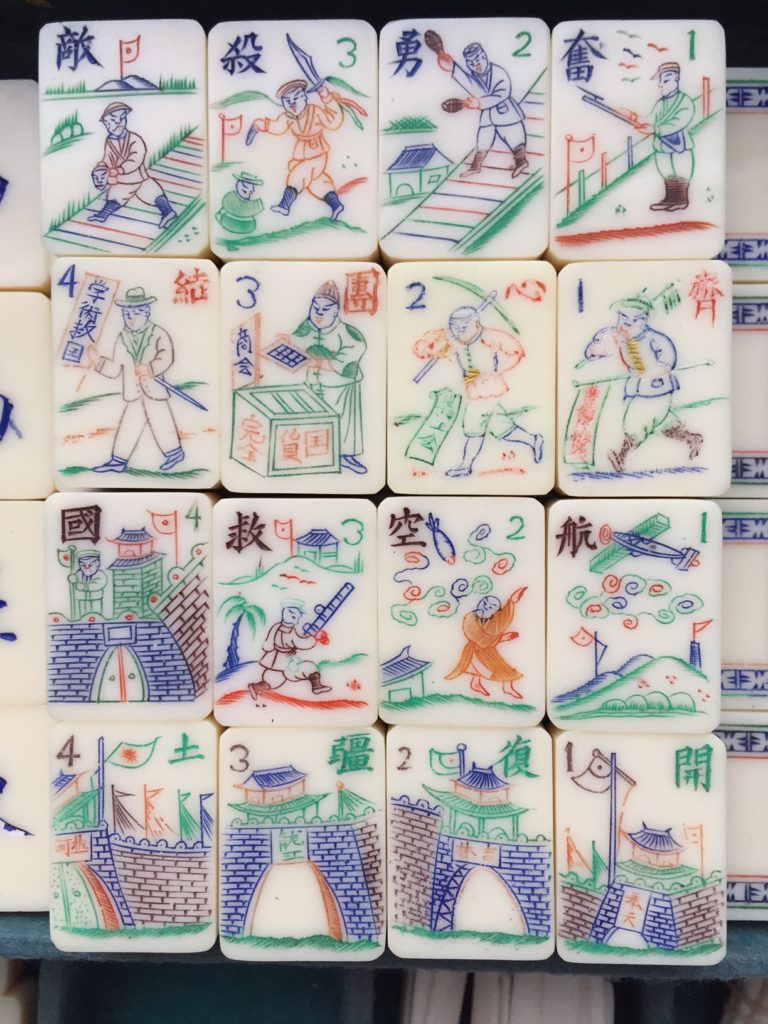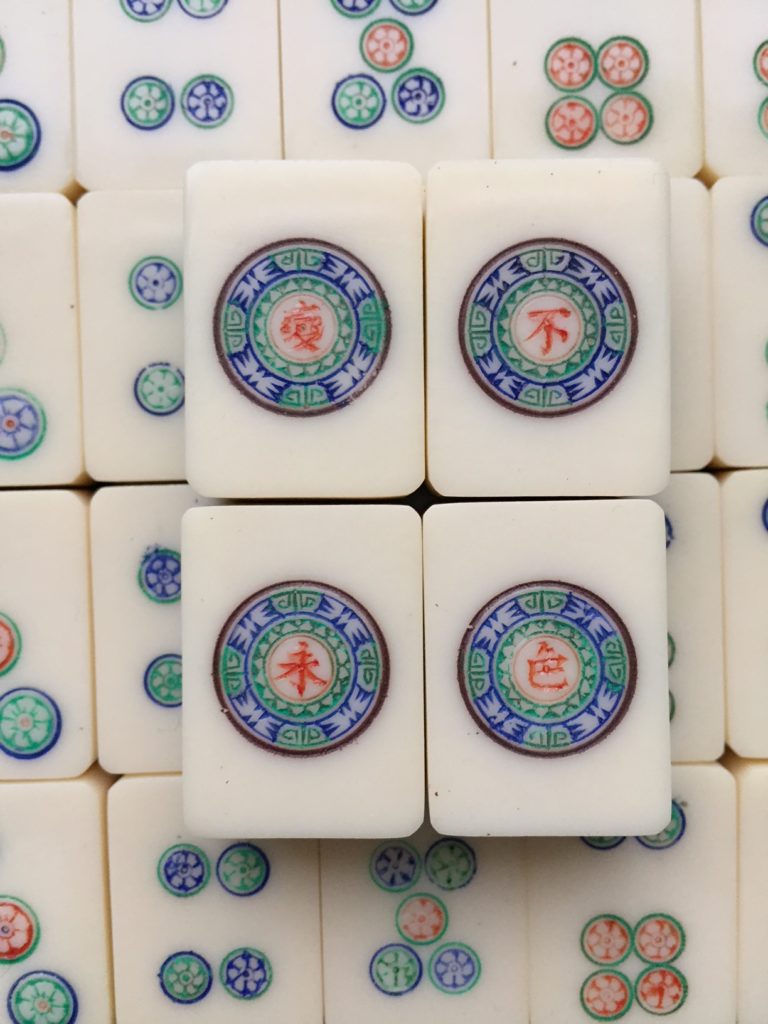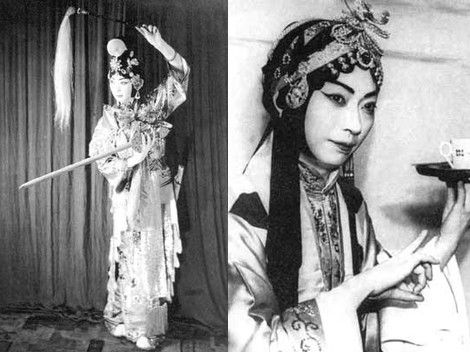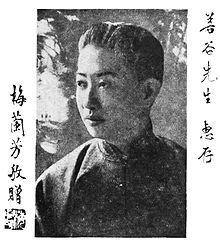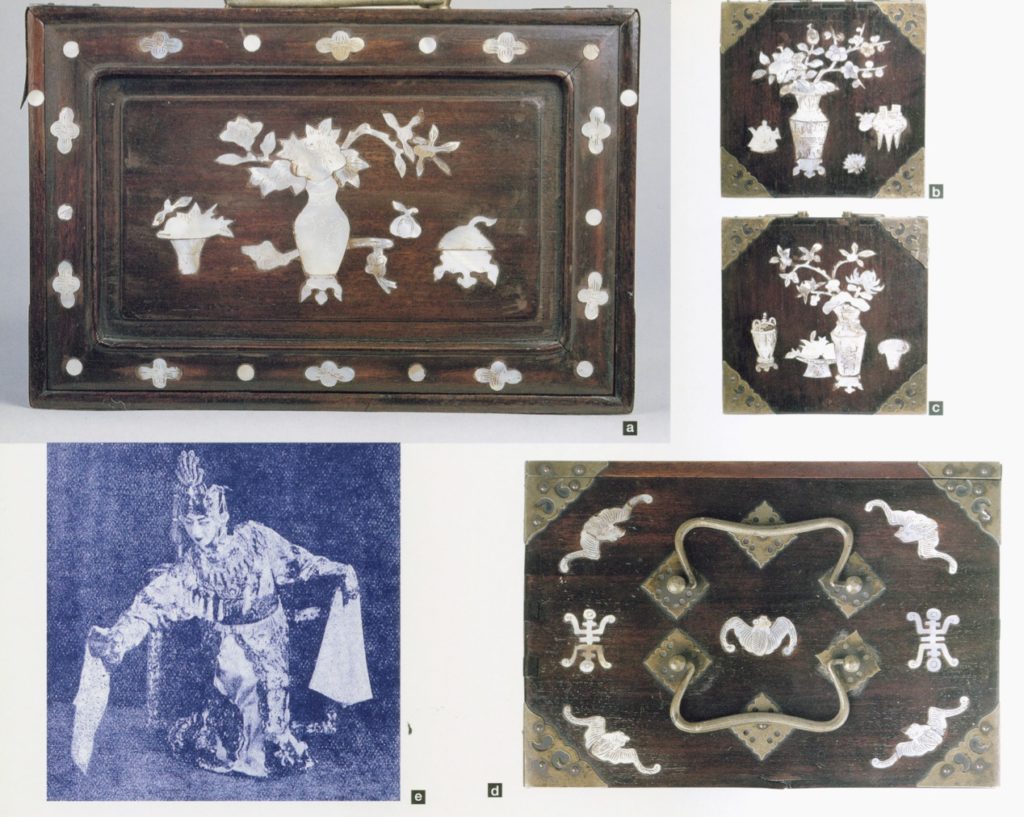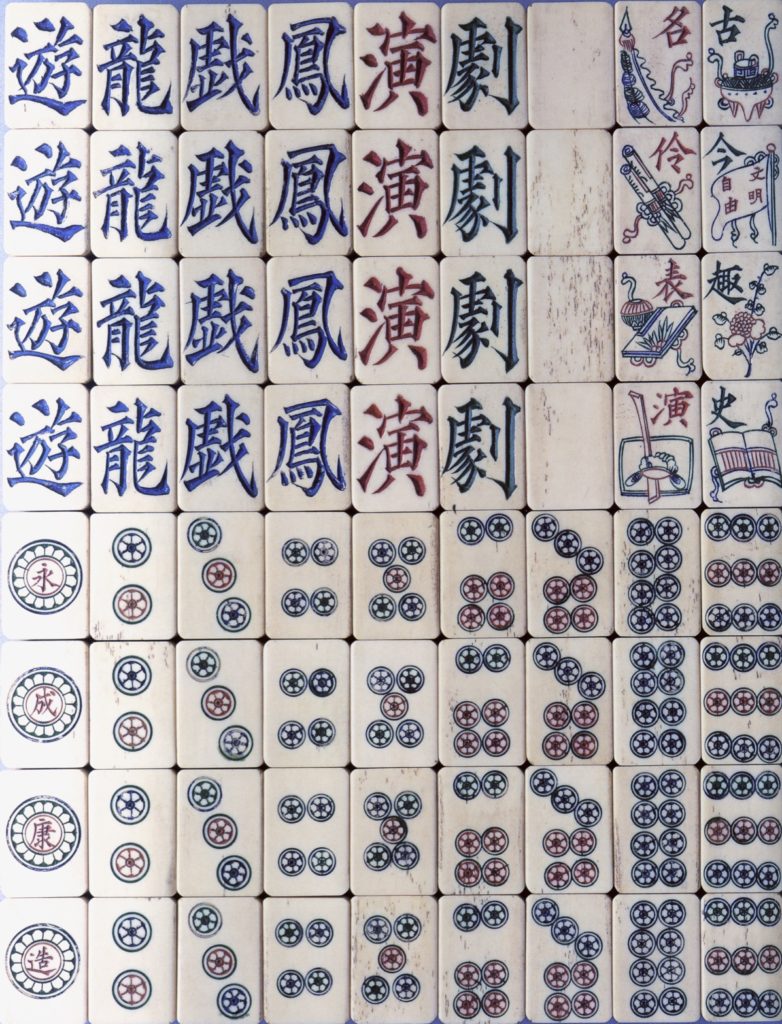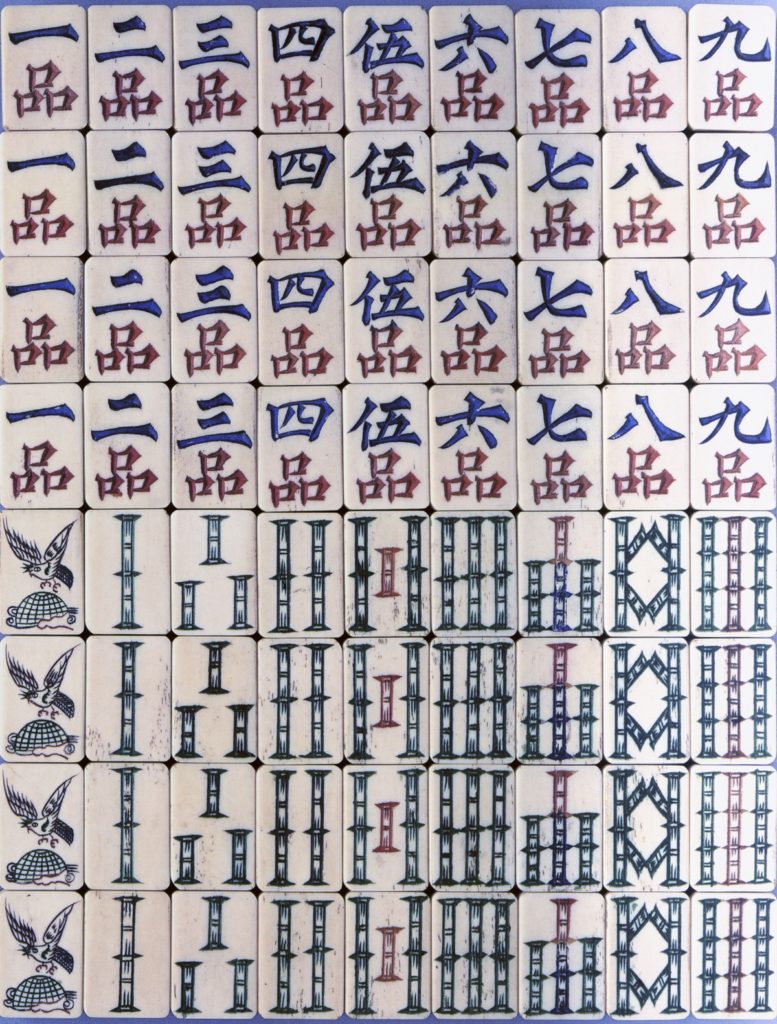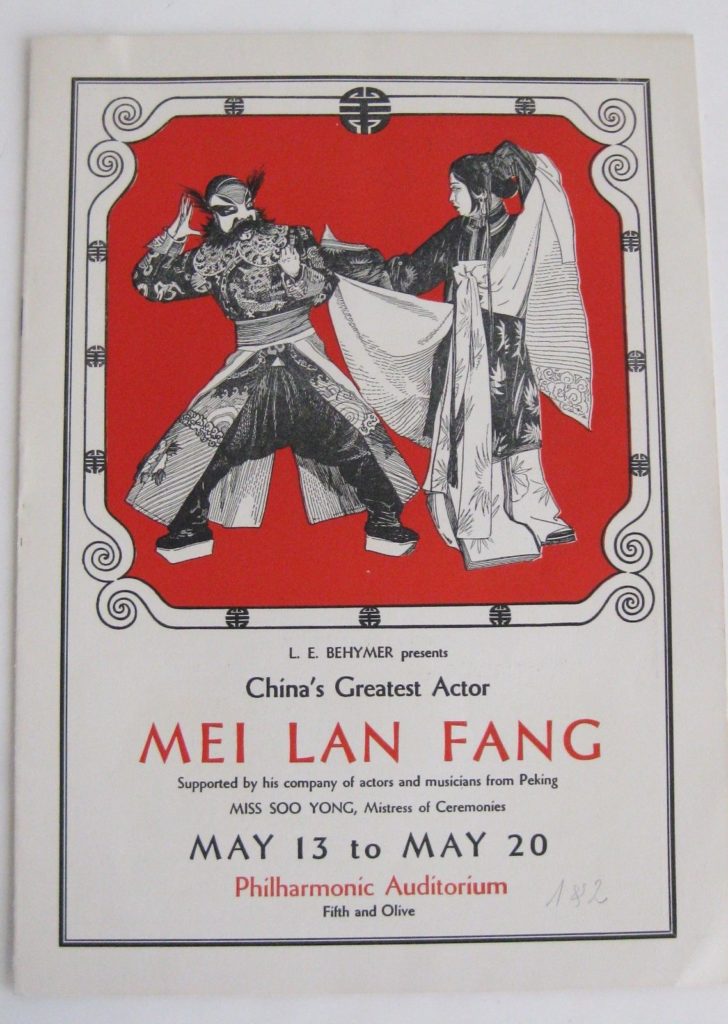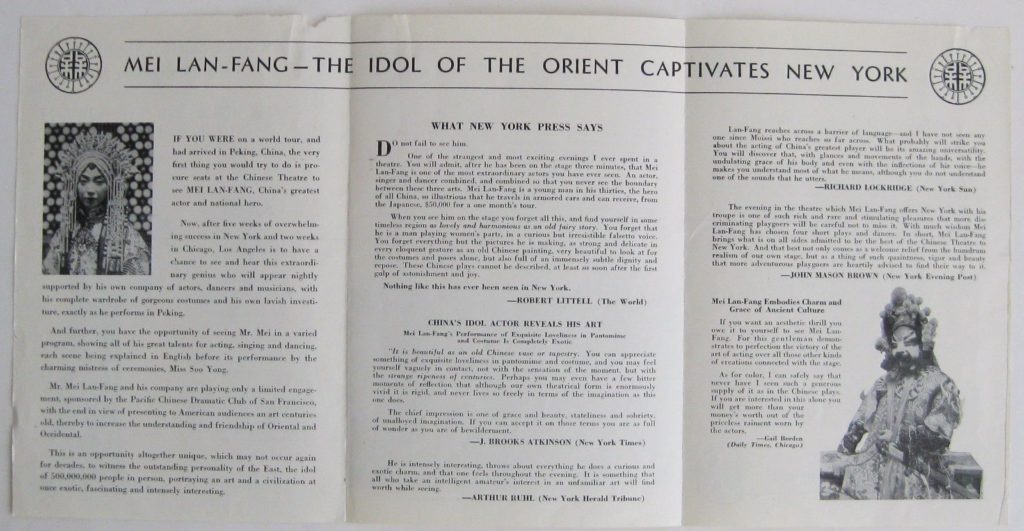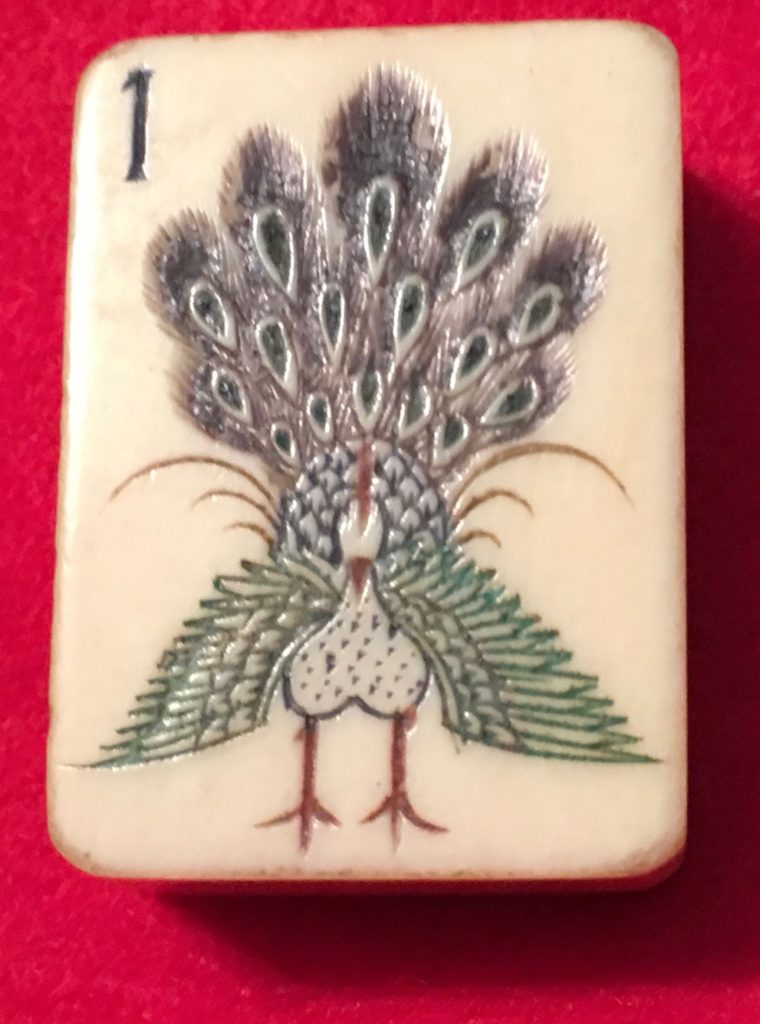
A gentleman sent me photos of his wonderful treasured ivory Mahjong set, purchased many years ago from a very wealthy Chinese family in old Vietnam. I must admit I gasped when I saw the images. This One Bam is one of the most beautiful peacocks I have ever seen on a Mahjong tile. Note the exquisite peacock tail, with the varied depth of the carving- you almost feel you can touch those feathers. The set was made by master craftsmen in the 1920s, created for the export market given the presence of Western letters and Arabic numbers.

You will note the longevity symbol in the center. *
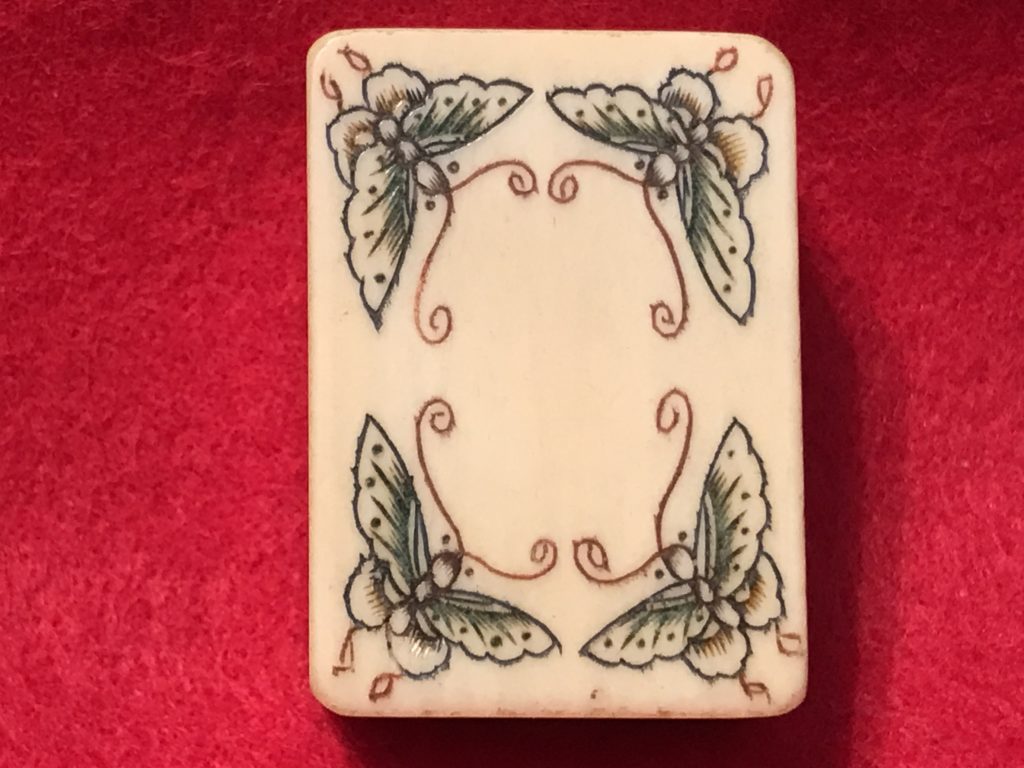
The White Dragon is especially lovely, with the delicate butterflies at the corners of the tile. These may be the most detailed butterflies ever on a Mahjong tile.
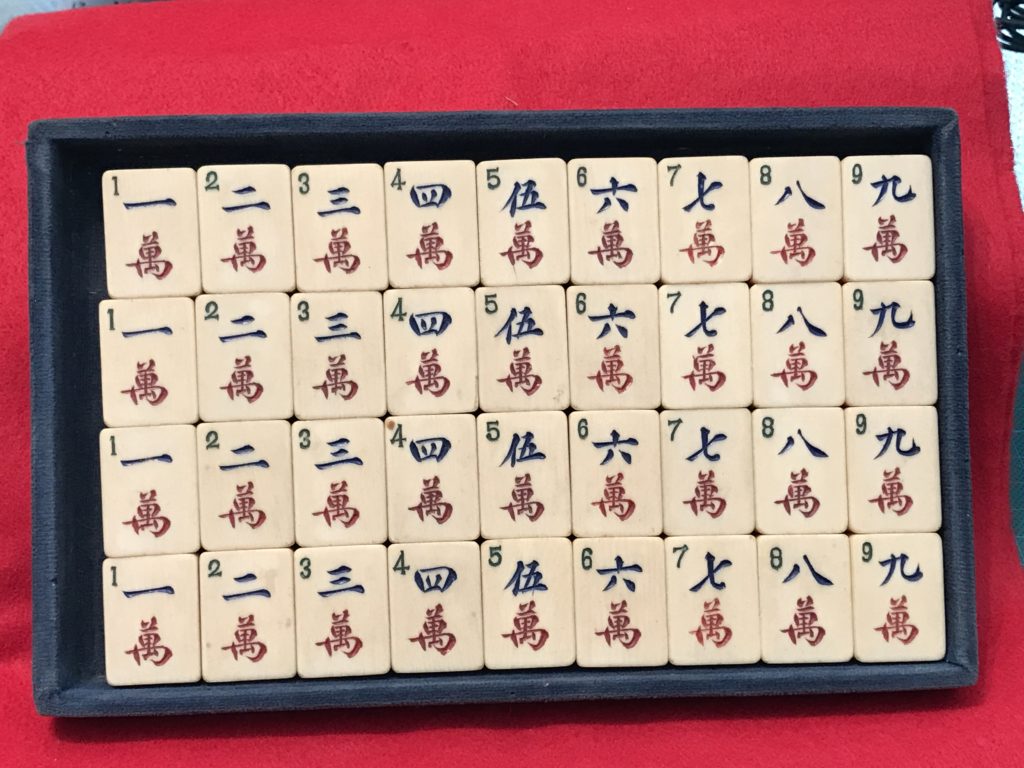
The Craks have the elaborate version of the wan.
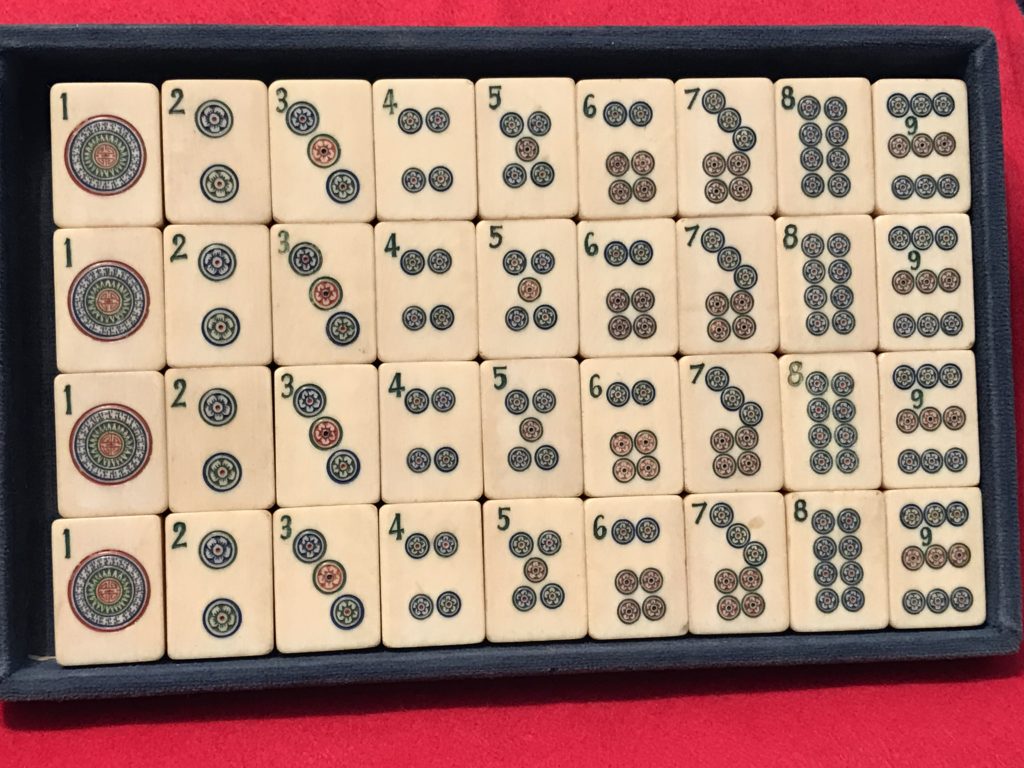
Note the care put into every Dot, with the floral centers.
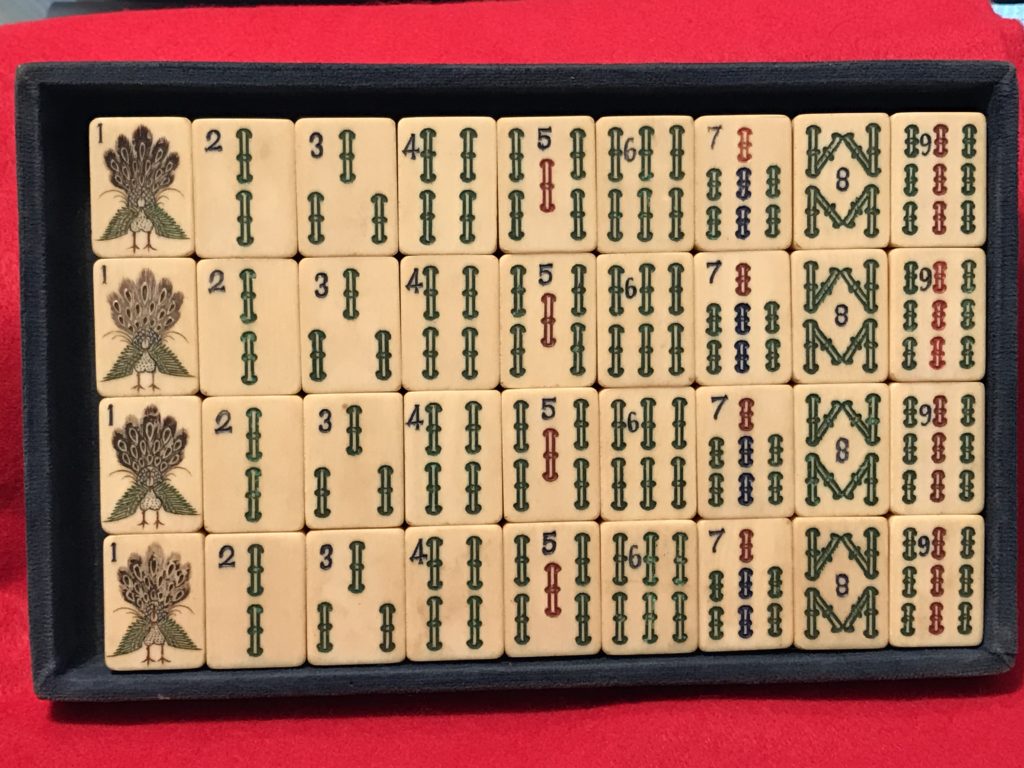
The color palette of the One Bam is very unusual, and highly attractive. It is rare to see such a big beautiful peacock, certainly taking ownership of the tile!
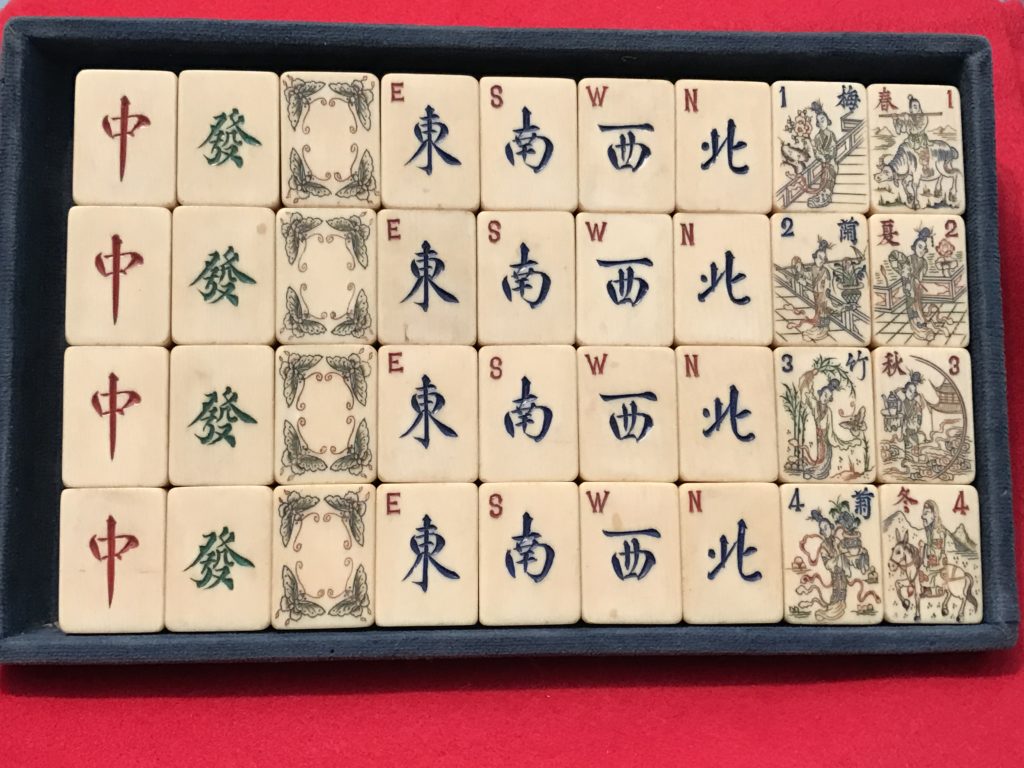
The Winds have our Western letters, but the Green and Red Dragons have Chinese Characters.
Enjoy these exquisite Flowers!!
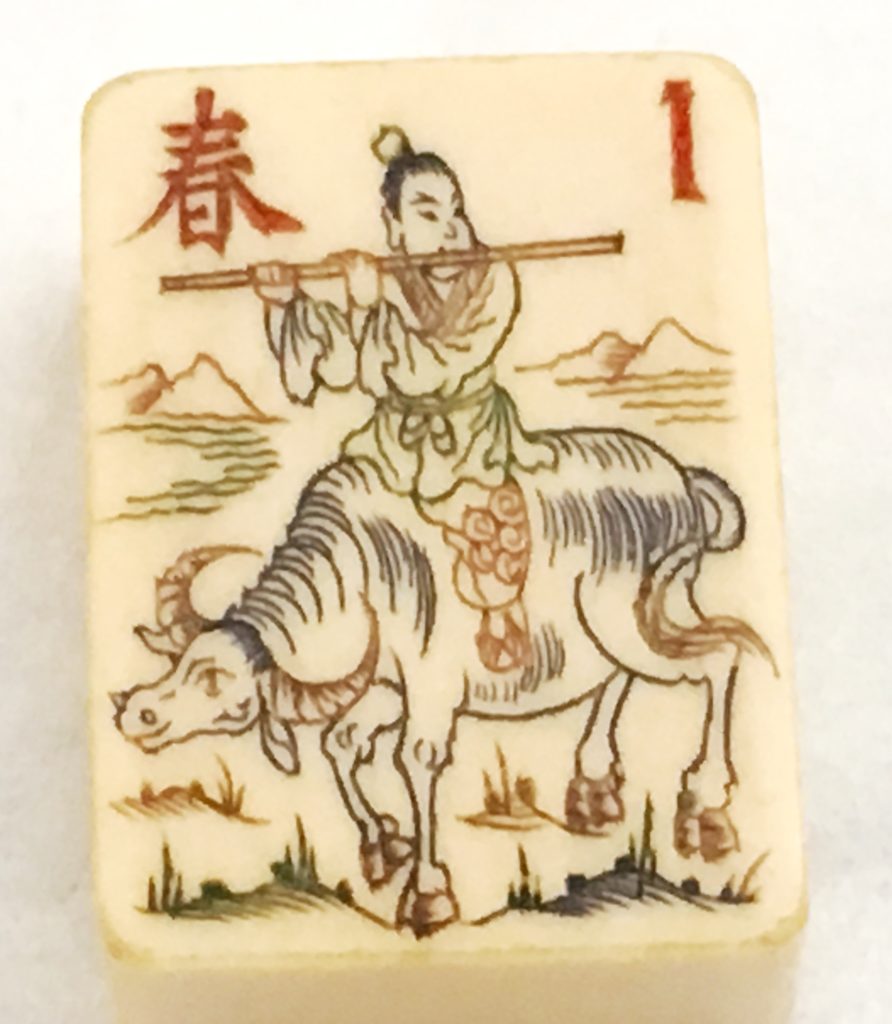
This image is often seen: a boy playing the flute on the back of the water buffalo. The number of details on the tile is extraordinary, and all the Flower tiles have this level of care.
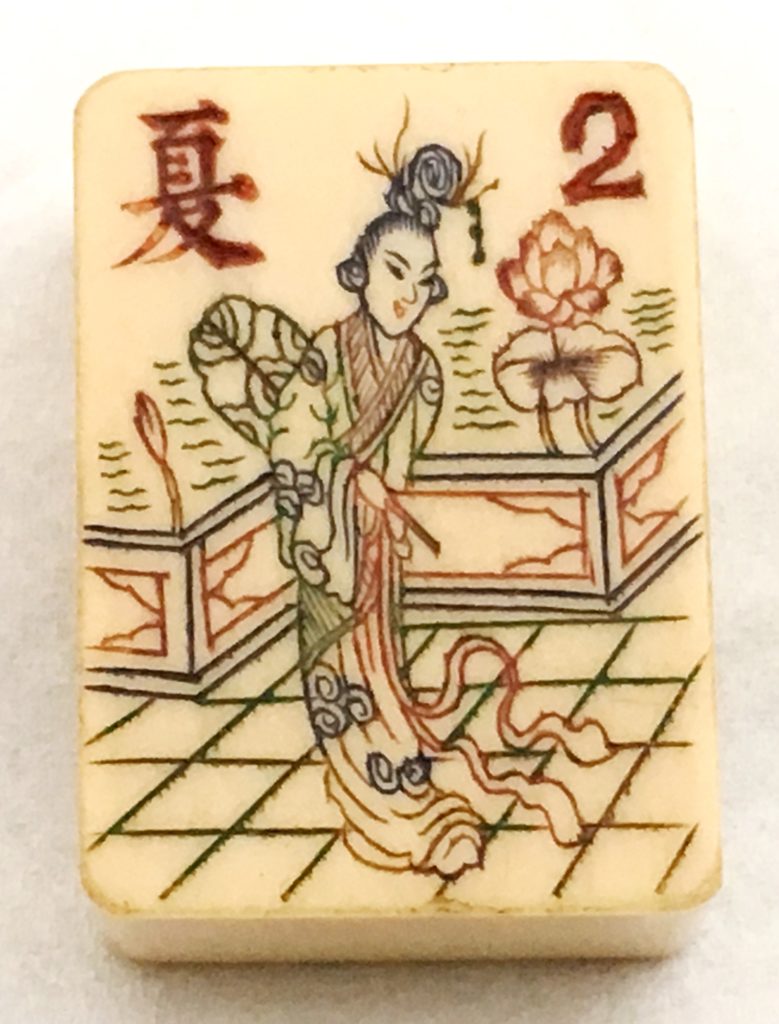
We certainly see a lot of maidens in Mahjong, but this set has very fine depictions. I feel all the maidens on these tiles are the same person, most likely a goddess. The craftsman has added delightful details: her highly decorated fan, beautiful robe and hair ornaments. The ribbons on her robe (on all the tiles where she appears) are blowing in the breeze, adding a graceful touch. As is almost always the case in Chinese garden scenes, there is a wall. Chinese garden walls harken back to the Great Wall, a source of pride.
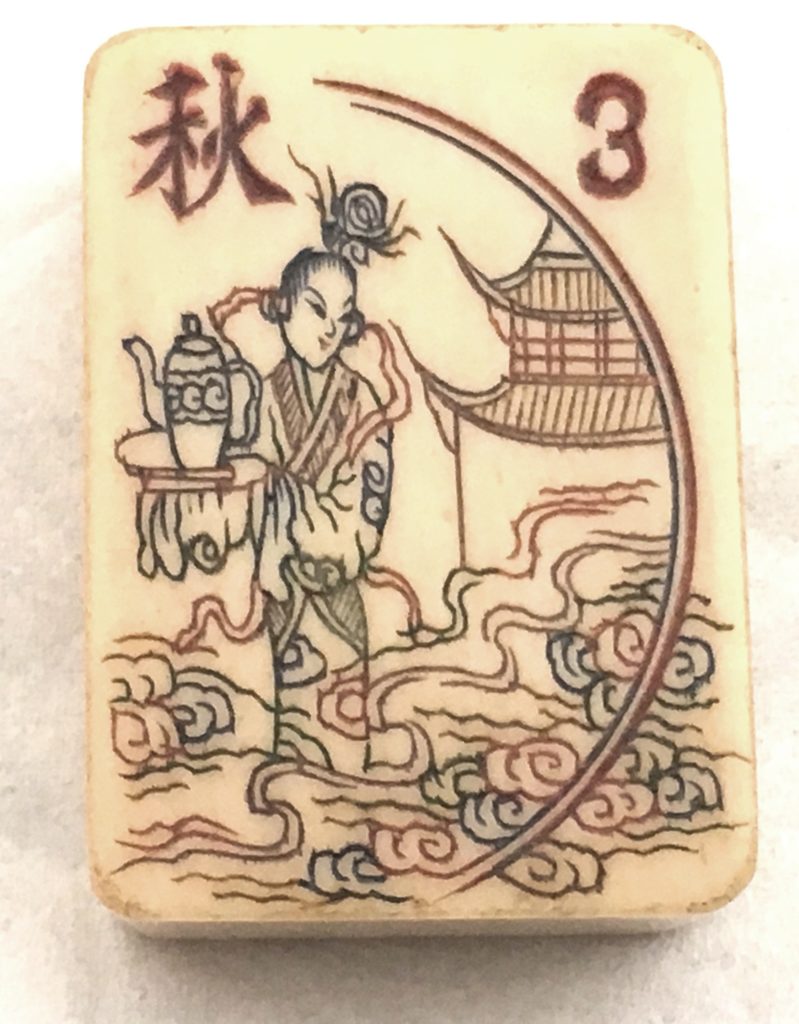
Given all the curlicues on the tile (curlicues represent the heavens), we are looking at a goddess. I love the idea that even up in the heavens they drink tea! The ribbons from her robe blend into the clouds. The semi-circular shape here might be a moongate.
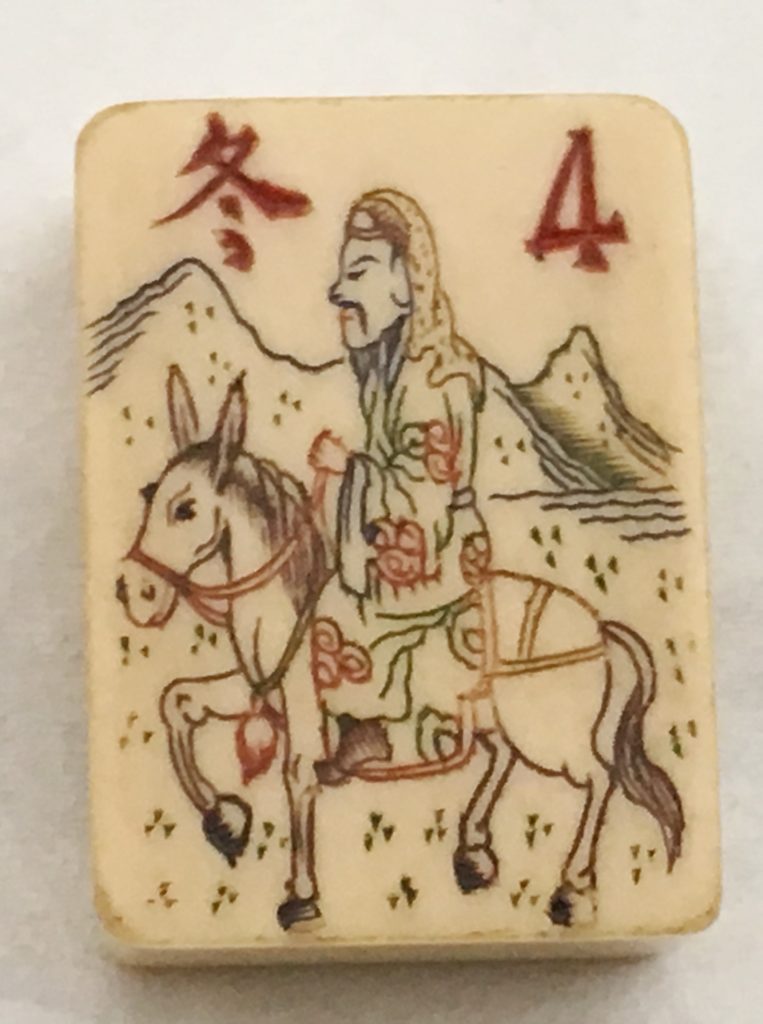
This is one of the best carvings of a horse I have seen of one on a Mahjong tile. The scenery the horse and rider are traveling through conjures up all those beautiful and sometimes sacred mountains in China.
The next suite of Flowers show the goddess/maiden with the four plants important to the Chinese: plum blossom, orchid, bamboo, and chrysanthemum.

We often see maidens walking down stairways, as our maiden is doing, here holding plum blossoms in her hand. There's a rock behind her, part of the created landscapes in the gardens of wealthy Chinese.
Even though this maiden is a goddess, it important to note when young ladies appear on Mahjong tiles, they are either at the window looking out, or in a garden. Wealthy young women in China were not allowed out of their home area after they "became women." Their homes and gardens were their worlds.
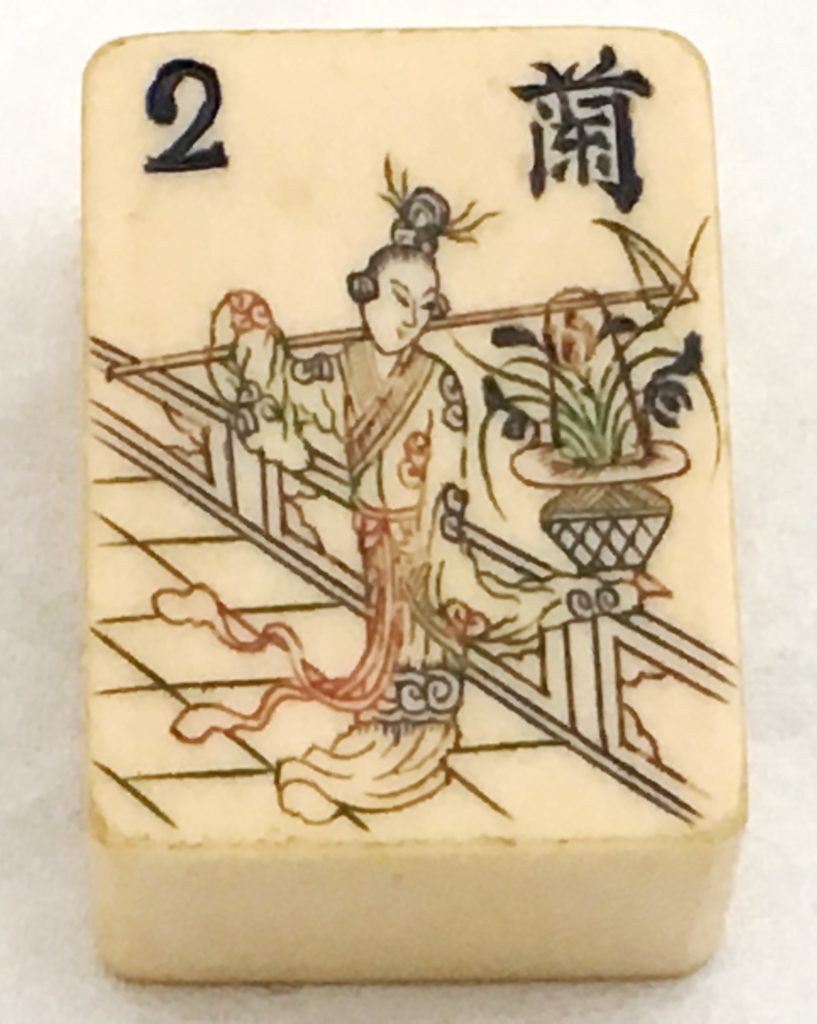
Here we see her walking past an urn where orchids are in bloom. The pole she is carrying might be a hoe, used for flower cultivation.
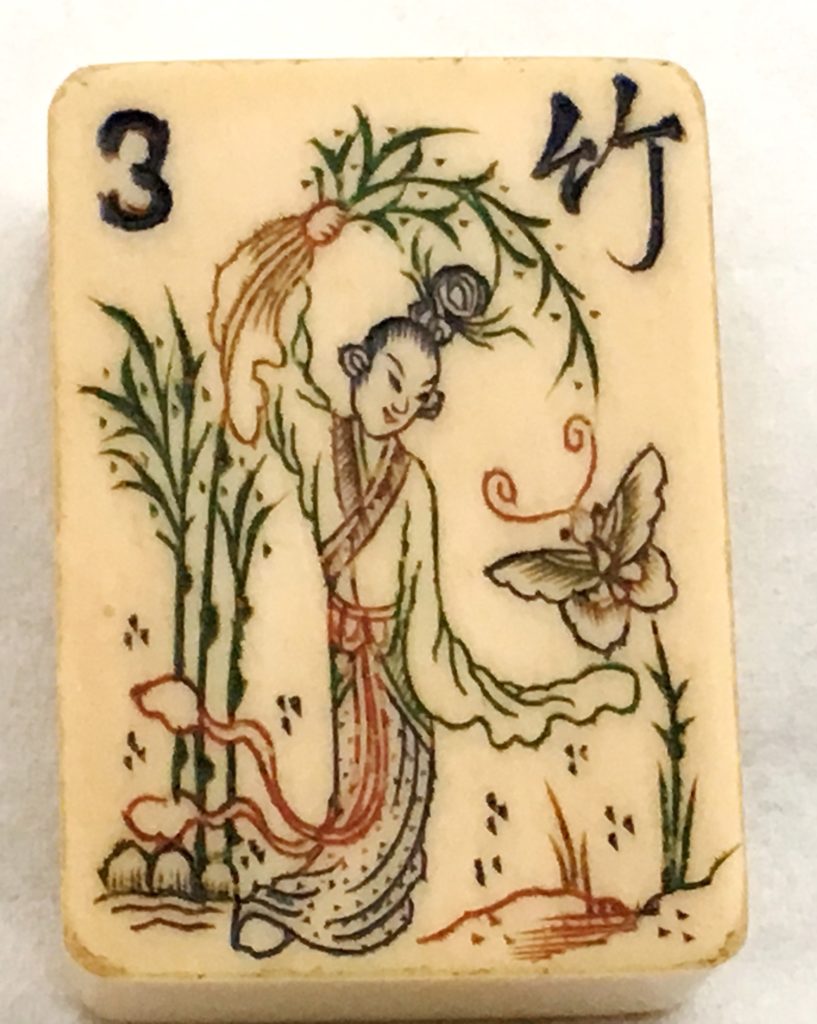
How charming is this image of her, bamboo in hand, playing with a butterfly? It is amazing how detailed the butterfly is, and remember, the whole tile is only over an inch in length.
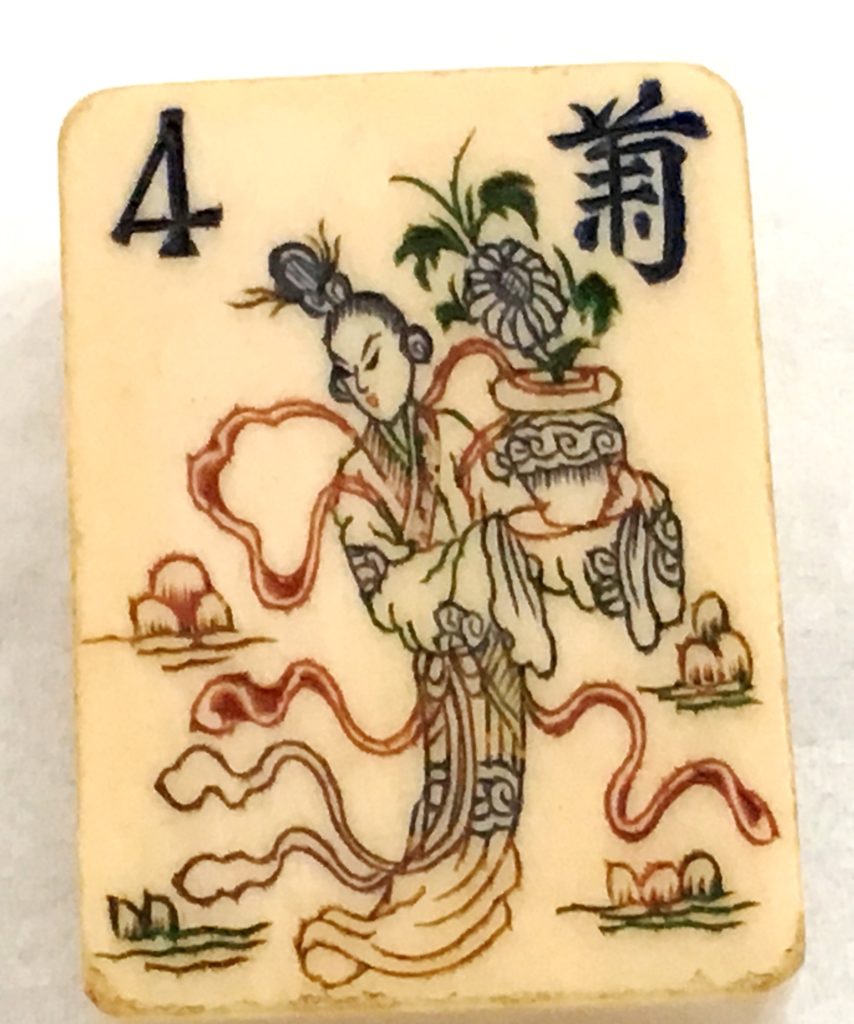
And finally we have this scene where she is holding that large pot of chrysanthemums. She appears to be floating, although I don't see any evidence of clouds.
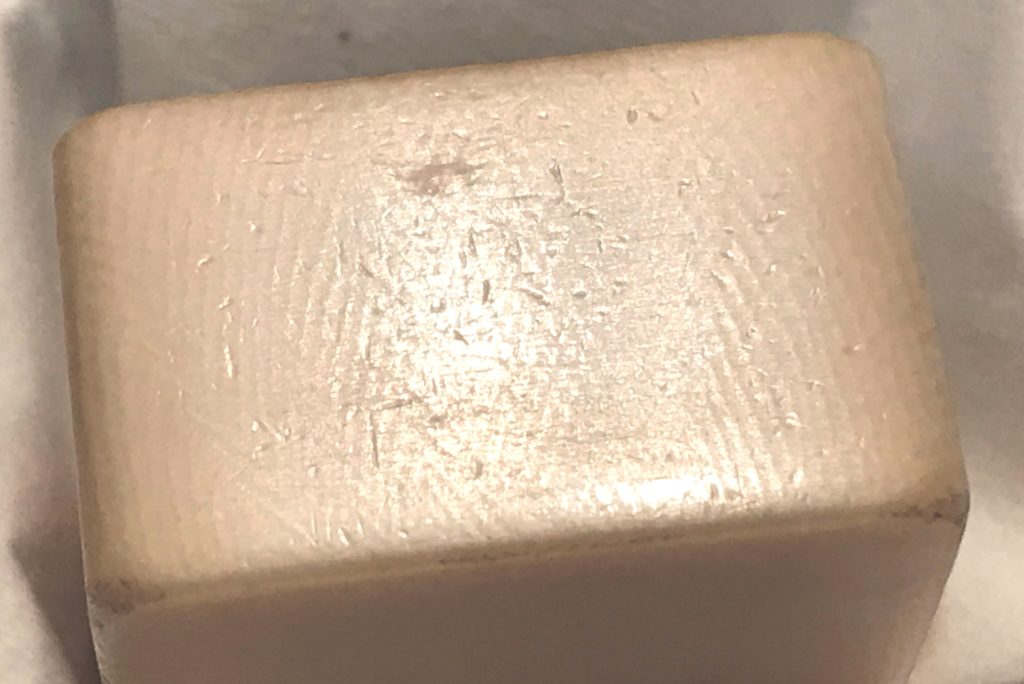
As many of you know, ivory is the only substance with the cross-hatching you see here. You might have to look at several tiles to see it, and it is often on the sides of the tiles, but if you find that cross-hatching, you have ivory. If you see a tile without any backing, such as bamboo or ebony to name a few, you probably have ivory. Look carefully for the cross-hatching, not the squiggly lines you would see on French Ivory. Given that China was very poor in the 1920s, ivory was not in great supply, and thus real ivory sets are very unusual.
Isn't this set fabulous??!! I think I "speak" for all of us that we are very grateful to the set's owner for sharing these images with us.
*Many of you will have noticed another symbol, the gammadion cross or swastika, ringing the center of the One Dot. To the Chinese and others in Asia, this symbol is very important, and it is best to remember that it has positive associations in Asian art, opposite of the horrifying one representing the Nazi party.
From wikipedia:
The Swastika (also known outside the Indian subcontinent as the Hakenkreuz, gammadion cross, cross cramponnée, croix gammée, fylfot, or tetraskelion) (as a character 卐 or 卍) is an ancient religious symbol originating from the Indian subcontinent, that generally takes the form of an equilateral cross with four legs each bent at 90 degrees.[1][2] It is considered to be a sacred and auspicious symbol in Hinduism, Buddhism, and Jainism and dates back at least 11,000 years.[3]
Western literature's older term for the symbol, gammadion cross, derives mainly from its appearance, which is identical to four Greek gamma letters affixed to each other.[4] The name Swastika comes from the Sanskrit (Devanagari: स्वस्तिक), and denotes a "lucky or auspicious object".[4] It has been used as a decorative element in various cultures since at least the Neolithic Age. It is known most widely as an important symbol, long used in Indian religions.

